24/7 Helpline:
(866) 899-221924/7 Helpline:
(866) 899-2219
Learn more about Xanax Rehab centers in St. Joseph County

Other Insurance Options

BlueShield

ComPsych

Providence

Regence

Cigna

Meritain

UMR

CareSource

Choice Care Network

GEHA

Health Net

American Behavioral

Multiplan

Absolute Total Care

Magellan

PHCS Network

Optima

Magellan Health

MHNNet Behavioral Health

Ambetter

Bear River Health at Walloon Lake
Bear River Health is located in Boyne Falls, Michigan. Bear River Health is Northern Michigan's newe...

River’s Bend
River's Bend is a full-service outpatient clinic that provides counseling, mental health and substan...

Sanford House for Women
Sanford House for Women is a drug and alcohol rehab located in Grand Rapids, MI. They provide a resi...

Sacred Heart Rehabilitation Center
Sacred Heart provides behavioral healthcare services to individuals with mental health disorders, su...

Life Challenge
Life Challenge is a non-profit prehab located in Detroit, MI. Life Challenge specializes in the trea...

Oakland Family Services – Substance Abuse
Oakland Family Services – Substance Abuse is a private rehab located in Pontiac, Michigan. Oakland F...

Dawn Farm – Downtown
Dawn Farm - Downtown is a non-profit rehab located in Ann Arbor, MI. Dawn Farm - Downtown street spe...

Premier Services of Michigan
Premier Services of Michigan is a private rehab located in Dearborn Heights, Michigan. Premier Servi...

Ascension Brighton Center for Recovery
The Ascension Brighton Center for Recovery in Brighton, MI is a drug and alcohol addiction rehab for...

Advanced Rapid Detox
Advanced Rapid Detox offers a four day detox program for individuals who are addicted to opioids. Lo...

Grace Centers of Hope – Men’s Program
Grace Centers of Hope is a faith based drug and alcohol rehab center in Pontiac, MI. The facility sp...

All Opiates Detox
All Opiates Detox is a private rehab located in Wyandotte, Michigan. All Opiates Detox specializes i...

Workit Health Ann Arbor
Workit Health Ann Arbor is a private rehab located in Ann Arbor, Michigan. Workit Health Ann Arbor s...

Sacred Heart Rehabilitation Center Madison Heights Recovery and Wellness Services
Sacred Heart Rehabilitation Center Madison Heights Recovery and Wellness Services is a non-profit re...

Skywood Recovery
Skywood Recovery is an adult addiction treatment center that specializes in dual diagnosis on a past...

Great Lakes Rehabilitation Center
Great Lakes Rehabilitation Center offers inpatient and outpatient services for individuals with subs...

Behavioral Rehabilitation Services
Situated across 80 wooded acres and surrounded by more than 20 lakes, Behavioral Rehabilitation Serv...

Child and Family Services – Saginaw
Child and Family Services – Saginaw is a private rehab located in Saginaw, Michigan. Child and Famil...

Partners in Change
Partners is dedicated to helping teens and adults who are struggling with emotional or behavioral is...

List Psychological Services
List Psychological Services is a private group practice specializing in behavioral health care; incl...

Ascension Eastwood Behavioral Health
Ascension Eastwood Behavioral Health offers comprehensive programs to help children, adolescents, ad...

Pine Rest Christian Mental Health Services – Northwest Clinic
Pine Rest Christian Mental Health Services - Northwest Clinic is located in the city of Walker on 3-...

Saint Mary Mercy Hospital – Department of Behavioral Medicine
Saint Mary Mercy Hospital – Department of Behavioral Medicine is a private rehab located in Livonia,...

Macomb County Mental Health
Macomb County Mental Health is a public rehab located in Saint Clair Shores, Michigan. Macomb County...

Cristo Rey Community Center
Cristo Rey Community Center is a non - profit community based rehab located in Lansing, MI. Cristo R...

Bergmann Center
Bergmann Center is a private rehab located in Charlevoix, Michigan. Bergmann Center specializes in t...

Salvation Army – Harbor Light Center
The Salvation Army's Monroe Harbor Light is a drug and alcohol abuse rehabilitation center in Monroe...

Saint Mary Mercy Hospital – Behavioral Health Unit
Saint Mary Mercy Hospital – Behavioral Health Unit is a private rehab located in Livonia, Michigan. ...
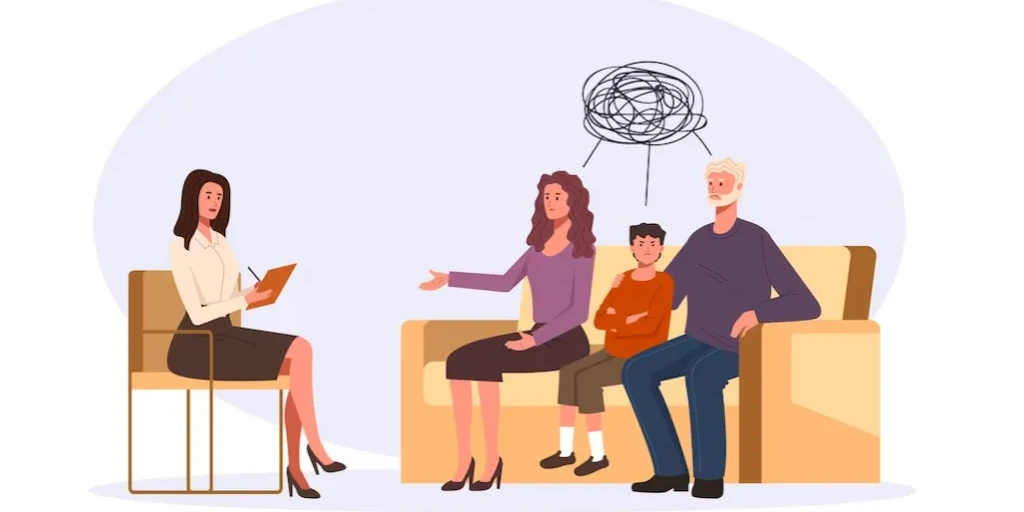
List Psychological Services
List Psychological Services is a private group practice specializing in behavioral health care; incl...
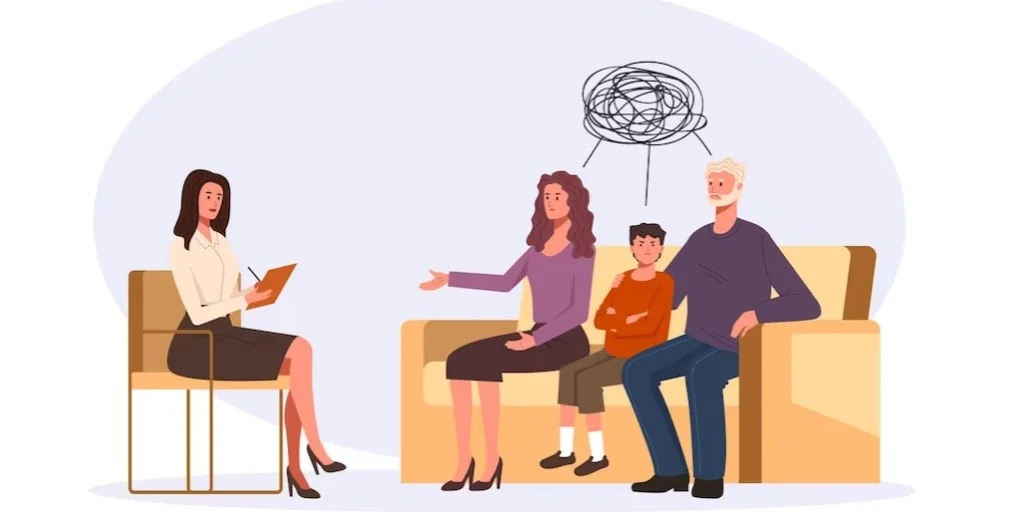
Northern Lakes Community Mental Health
Northern Lakes Community Mental Health is a public rehab located in Traverse City, Michigan. Norther...

Cherry Health – Monica Street
Cherry Health - Monica Street is an independent, non-profit Federally Qualified Health Center (FQHC)...

Sober Homes
Sober Homes is a private rehab located in Ann Arbor, Michigan. Sober Homes specializes in the treatm...

Pine Rest Christian Mental Health Services – Pine Rest Campus
Pine Rest Christian Mental Health Services - Pine Rest Campus is a nonprofit mental health and addic...

Behavior Services
LLC Behavior Services is a private rehab located in Grand Rapids, MI. LLC Behavior Services speciali...

Northeast Guidance Center – Family Services
Northeast Guidance Center – Family Services is a private rehab located in Harper Woods, Michigan. No...

Health Emergency Lifeline Programs
Stonecrest Behavioral Health Hospital is an inpatient mental health and substance use disorder treat...

Network180
Network 180 is a CARF accredited behavioral health and addiction treatment center for children and a...

Development Centers – Family Services
Development Centers – Family Services is a private rehab located in Detroit, Michigan. Development C...

Hegira Health – Oakdale Recovery Center
Hegira Health – Oakdale Recovery Center is a drug and alcohol rehab center located in Canton, MI. Th...

Redford Counseling Center
Redford Counseling Center is a nonprofit rehab located in Redford, Michigan. Redford Counseling Cent...

Beginning New
Beginning New is a private rehab located in Detroit, Michigan. Beginning New specializes in the trea...

Western Michigan Adult & Teen Challenge
Western Michigan Adult & Teen Challenge is a one year live-in discipleship program. We help adults s...

Pine Rest Christian Mental Health Services
Located in Kalamazoo, Michigan, Pine Rest Christian Mental Health Services offers mental health, beh...

Professional Counseling Center
Professional Counseling Center offers outpatient services for individuals with alcohol and/or substa...

Copper Country Mental Health Services Institute
Copper Country Mental Health Services Institute is located in Houghton, Michigan. Copper Country Men...

Operation Get Down
Operation Get Down is a non-prfoit rehab located in Detroit, Michigan. Operation Get Down provides r...

Our Hope Association
Our Hope Association is a nonprofit organization dedicated to guiding women to lifelong recovery fro...

DOT Caring Center
DOT Caring Center is a private rehab located in Flint, Michigan. DOT Caring Center specializes in th...

ProMedica Coldwater Regional Hospital – Behavioral Health
ProMedica Coldwater Regional Hospital – Behavioral Health is a private rehab located in Coldwater, M...

Dawn Farm
Dawn Farm is located in Ypsilanti, Michigan. Dawn Farm is an addiction treatment center with an emph...

Two Rivers Counseling and Consulting
Two Rivers Counseling and Consulting is a private counseling clinic located in Portland, MI. Two Riv...

Hurley Mental Health Services
Hurley Mental Health Services is a private rehab located in Flint, Michigan. Hurley Mental Health Se...

Battle Creek VA Medical Center – Muskegon VA Outpatient Clinic
Muskegon VA Outpatient Clinic provides Behavioral Health services in an outpatient setting. Muskegon...

Ascension Borgess Hospital Behavioral Health Inpatient Care
Ascension Borgess Hospital is a co-occurring substance use disorder treatment center located in Kala...

Pine Rest Christian Mental Health Services – Northeast Clinic
Pine Rest Christian Mental Health Services - Northeast Clinic is located in Grand Rapids, Michigan, ...

North Country Mental Health
North Country Mental Health is a public rehab located in Charlevoix, Michigan. North Country Mental ...

Great Lakes Recovery Centers
Great Lakes Recovery Centers provides outpatient treatment for adults and children with a Mental Hea...

Oakland Psychological Clinic
Oakland Psychological Clinic is a private rehab located in Grand Blanc, Michigan. Oakland Psychologi...

War Memorial Hospital – Behavioral Health Center
War Memorial Hospital – Behavioral Health Center is a private rehab located in Kincheloe, Michigan. ...

Reality Counseling Services
Reality Counseling Services is an outpatient facility that offers treatment for individuals dealing ...

Macomb Family Services
Macomb Family Services is dedicated to provide outpatient mental health and substance abuse treatmen...

Elizabeth Upjohn Community Healing Center
Elizabeth Upjohn Community Healing Center’s psychologists and social workers provide a wide range of...

Sacred Heart Rehabilitation Center
Sacred Heart Rehabilitation Center is a not-for-profit behavioral healthcare organization with a leg...

Community Mental Health Services
Community Mental Health Services is a private rehab located in Mount Pleasant, Michigan. Community M...

Macomb Family Services
Macomb Family Services is dedicated to provide outpatient mental health and substance abuse treatmen...

Michigan Therapeutic Consultants
Michigan Therapeutic Consultants is a private rehab located in Mount Pleasant, Michigan. Michigan Th...

Structured Living – Briarwood Circle
Structured Living – Briarwood Circle is a private rehab located in Ann Arbor, Michigan. Structured L...

North Kent Guidance Services
North Kent Guidance Services (NKGS) is an association of Grand Rapids health care professionals comm...

Advanced Counseling Services
Advanced Counseling Services is located in Saint Clair Shores, Michigan. Advanced Counseling Service...

Community Care Services – 26184 West Outer Drive
Community Care Services - 26184 West Outer Drive is located in Lincoln Park, Michigan. Community Car...

Copper Country Community Mental Health Services
Copper Country Community Mental Health Services is located in Calumet, Michigan. Copper Country Comm...

Lincoln Behavioral Services
Lincoln Behavioral Services, in Redford, Michigan, provides outpatient mental health and addiction r...
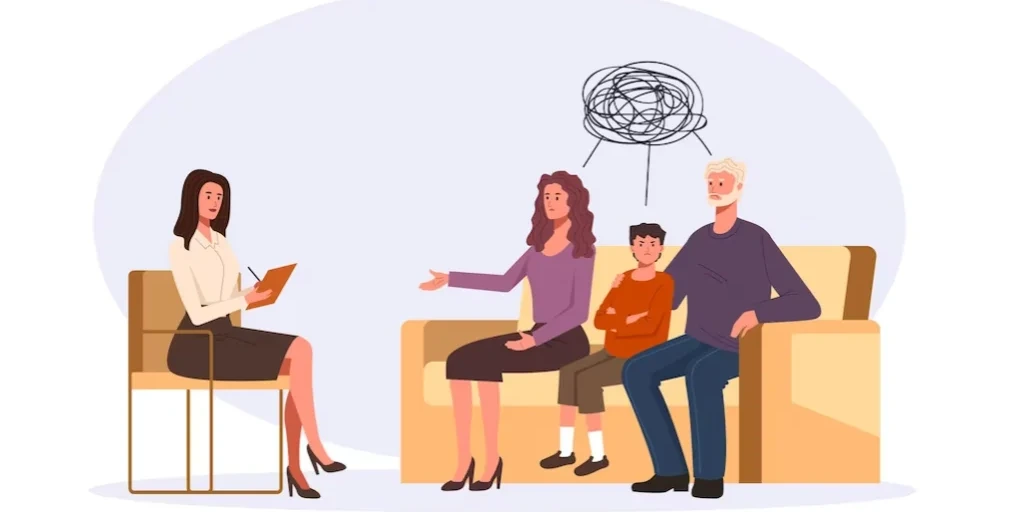
Hegira Health – Adult Outpatient Services for SMI – Comprehensive Health Clinic
Hegira Programs - Adult Outpatient Services for SMI located in Westland, Michigan. Hegira Programs -...

Family Services
Family Services is a private rehab located in Detroit, Michigan. Family Services specializes in the ...

Cross Road Center
Cross Road Center is a private rehab located in Corunna, Michigan. Cross Road Center specializes in ...

Hegira Health – Westland Counseling Center
Hegira Programs - Westland Counseling Center is located in Westland, Michigan. Hegira Programs - Wes...

Harbor Hall
Located in Petoskey, Michigan, Harbor Hall is an alcohol and drug rehab center that helps individual...

Recovery Unlimited Treatment Center
Recovery Unlimited Treatment Center is a private rehab located in Flint, Michigan. Recovery Unlimite...

Saginaw Psychological Services
Saginaw Psychological Services is a private rehab located in Saginaw, Michigan. Saginaw Psychologica...

Hiawatha Behavioral Health
Hiawatha Behavioral Health is a public rehab located in Saint Ignace, Michigan. Hiawatha Behavioral ...

Saginaw Odyssey House
Saginaw Odyssey House is a 30 bed Long Term Residential Women’s Specialty Program for Women with Chi...

Harbor Hall – Outpatient
Harbor Hall – Outpatient is a non-profit rehab located in Petoskey, Michigan. Harbor Hall – Outpatie...

Victory Clinical Services III
Victory Clinical Services III is a private rehab located in Jackson, Michigan. Victory Clinical Serv...

Lenawee County Community Mental Health
Lenawee County Community Mental Health is a public rehab located in Adrian, Michigan. Lenawee County...

Jabez Recovery Management Services
Jabez Recovery Management Services is a private rehab located in Detroit, Michigan. Jabez Recovery M...

Detroit Rescue Mission Ministries
Detroit Rescue Mission Ministries Is a faith-based drug and alcohol rehab for adults in Detroit, Mic...

Victory Clinical Services
Victory Clinical Services is a private rehab located in Lansing, Michigan. Victory Clinical Services...

AA – Oakland County Alano Club
AA - Oakland County Alano Club hosts a variety of AA meetings and provides a drug-free environment i...

Family Counseling and Children Services
Family Counseling and Children Services is a private rehab located in Adrian, Michigan. Family Couns...

Henry Ford Allegiance Tobacco Treatment Services
Henry Ford Allegiance Tobacco Treatment Services is a private rehab located in Jackson, Michigan. He...

Quality Behavioral Health
Quality Behavioral Health, in Sterling Heights, Michigan, is a 12 step-focused drug and alcohol reha...

Ionia County Substance Abuse Initiative
Ionia County Substance Abuse Initiative is a public rehab located in Ionia, Michigan. Ionia County S...

ACAC – Alcohol and Chemical Abuse Consultants
Alcohol and Chemical Abuse Consultants (ACAC) provides outpatient services for mental health and sub...

Michigan Therapeutic Consultants
Michigan Therapeutic Consultants is a private rehab located in Gaylord, Michigan. Michigan Therapeut...

Meridian Professional Psychological Consultants
Meridian Professional Psychological Consultants is located in East Lansing, Michigan. Meridian Profe...

Montcalm Care Network
Montcalm Care Network provides a comprehensive behavioral care through an integrated team approach. ...

DOT Caring Centers
DOT Caring Centers is a private rehab located in Flint, Michigan. DOT Caring Centers specializes in ...

Saginaw Chippewa Indian Tribe
Located in the heart of the Isabella Reservation, Saginaw Chippewa Indian Tribe Behavioral Health Pr...

Above the Water House
Above the Water House is a private rehab located in Flint, Michigan. Above the Water House specializ...

Genesee Mental Health
Genesee Mental Health is a public rehab located in Flint, Michigan. Genesee Mental Health specialize...

Oakland Psychological Clinic
Oakland Psychological Clinic is a private rehab located in Livonia, Michigan. Oakland Psychological ...

Providence Hospital – Behavioral Health
Located in Southfield, Michigan, Providence Hospital- Behavioral Health Provides Behavioral Services...

Ten16 Recovery Network
Ten16 Recovery Network has a proud history of providing services to people impacted by substance use...

Saginaw County Community Mental Health
Saginaw County Community Mental Health is a public rehab located in Saginaw, Michigan. Saginaw Count...

Latino Family Services
Latino Family Services is a private rehab located in Detroit, Michigan. Latino Family Services speci...

Community Programs – Men’s Residential
Community Programs - Men’s Residential offers a gender specific treatment for men struggling with su...

Pine Rest Christian Mental Health Services
Pine Rest Christian Mental Health Services - Washington Avenue is located in Holland, Michigan. Pine...

Ten16 Recovery Network
Ten Sixteen Recovery Network is a nonprofit rehab located in Clare, Michigan. Ten Sixteen Recovery N...

Great Lakes Recovery Centers – Men’s New Hope House
Great Lakes Recovery Centers - Men’s New Hope House is non-profit organization that provides inpatie...
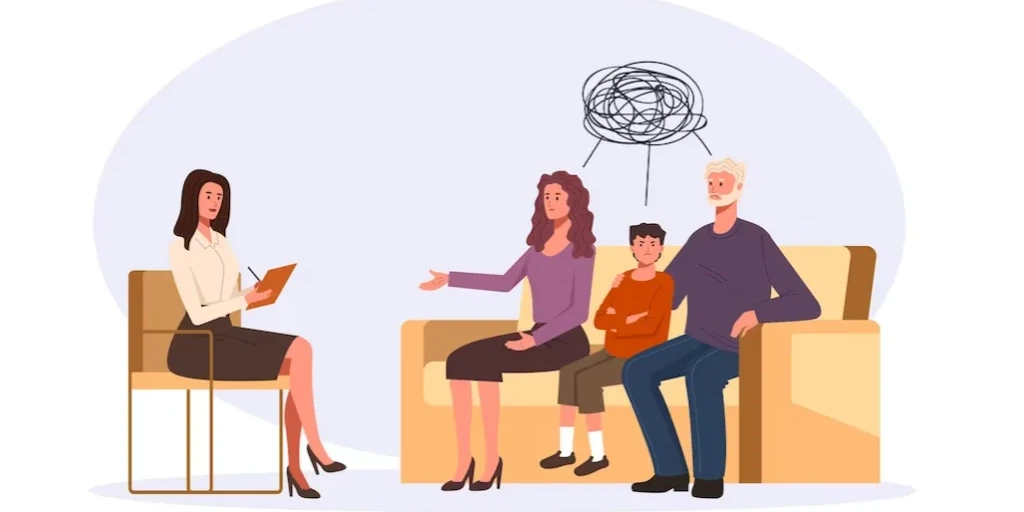
Lapeer County – Touchstone
Lapeer County Community Mental Health and CMHSP is a public rehab located in Lapeer, MI. Lapeer Coun...

Easterseals Michigan
Easterseals Michigan offers outpatient services for families and children who have a Mental Health d...

BASES Recovery Center
BASES Recovery Center was founded in 1993 as a private, non-profit, licensed substance abuse provide...

Sacred Heart Rehabilitation Center
Sacred Heart Rehabilitation Center, in Port Huron, Michigan, offers outpatient and residential progr...

New Oakland Family Center
New Oakland Family Center, in Clarkston, Michigan, provides outpatient mental and behavioral health ...

Community Mental Health and Substance Abuse Services of Saint Joseph County
Community Mental Health and Substance Abuse Services of Saint Joseph County is a public rehab locate...

Bethany Christian Services – Substance Abuse Counseling
Bethany Christian Services – Substance Abuse Counseling is a private rehab located in Grand Rapids, ...

Pine Rest Christian Mental Health Services – Community Services Clinic
Pine Rest Christian Mental Health Services–Community Services Clinic, in Grand Rapids, Michigan, pro...

Heron Ridge Associates
Heron Ridge Associates - Clarkston Road is a group of Michigan mental health and chemical dependency...

Positive Images – Coplin Street
Positive Images - Coplin Street offers transitional house services for women recovering from alcohol...
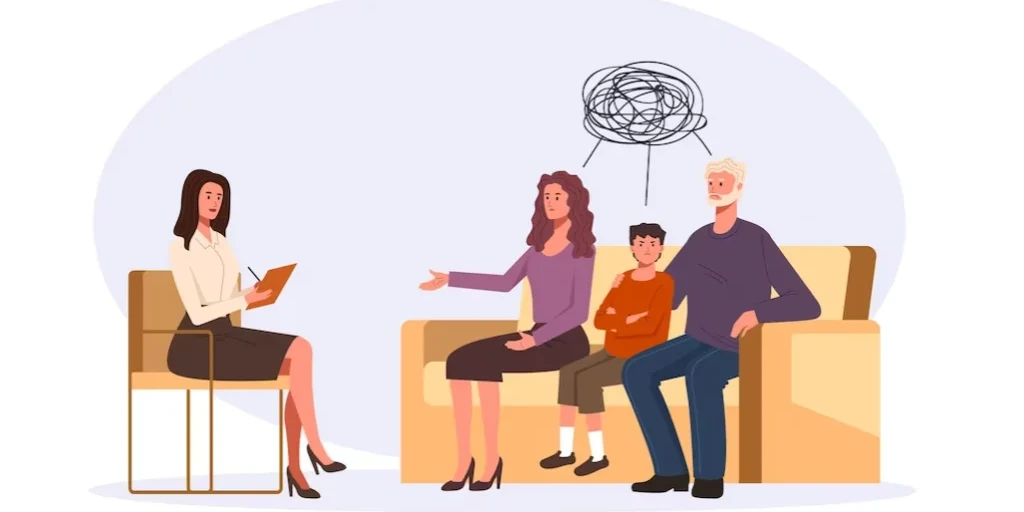
Odyssey Village
Flint Odyssey House is a drug-free comprehensive recovery community that serves as a microcosm of so...

Common Ground
Common Ground is a nonprofit rehab located in Pontiac, Michigan. Common Ground specializes in the tr...

Spectrum Health Ludington – Psychiatry
Spectrum Health Ludington – Psychiatry is a private rehab located in Ludington, Michigan. Spectrum H...

Arenac Behavioral Health
Arenac Behavioral Health is a public rehab located in Standish, Michigan. Arenac Behavioral Health s...

Holy Cross Counseling – Grand Traverse Street
Holy Cross Counseling - Grand Traverse Street provides a comprehensive substance abuse treatment pro...

IMPACT – Center for Human Resources
IMPACT - Center for Human Resources provides mental health and substance abuse treatment for individ...

Herrick Medical Center – Outpatient
Herrick Medical Center – Outpatient is a private rehab located in Tecumseh, Michigan. Herrick Medica...

Pure Recovery
Pure Recovery is a private rehab located in Detroit, MI. Pure Recovery specializes in the treatment ...

Summit Pointe
Summit Pointe, in Battle Creek, Michigan, provides mental health and dual diagnosis care for youth a...

Bethany Christian Services
Bethany Christian Services is a private rehab located in Grand Rapids, Michigan. Bethany Christian S...

Gogebic Community Mental Health Authority
Gogebic Community Mental Health Authority is a public rehab located in Wakefield, Michigan. Gogebic ...

Community Mental Health Services
Community Mental Health Services is a public rehab located in Big Rapids, Michigan. Community Mental...

Kalamazoo Psychology
Kalamazoo Psychology offers outpatient treatment for individuals with alcohol and/or substance addic...

Child and Family Charities
Child and Family Charities is a non-profit rehab located in Lansing, Michigan. Child and Family Char...

North Central Health Center
North Central Health Center is a private rehab located in Detroit, Michigan. North Central Health Ce...

Pathways Community Mental Health
Pathways Community Mental Health is a private rehab located in Escanaba, Michigan. Pathways Communit...

Macomb Family Services
Macomb Family Services is dedicated to provide outpatient mental health and substance abuse treatmen...

North Kent Guidance Services
North Kent Guidance Services (NKGS) is an association of Grand Rapids health care professionals comm...

Ottagan Addictions Recovery
Ottagan Addictions Recovery offers outpatient and intensive outpatient services for individuals affe...

Riverwood Center – Outpatient
Riverwood Center–Outpatient, in Niles, Michigan, provides mental and behavioral health care for yout...

Macomb County Mental Health
Macomb County Mental Health is a public rehab located in Sterling Heights, Michigan. Macomb County M...

Insight Counseling of Tecumseh
Insight Counseling of Tecumseh is a private rehab located in Tecumseh, Michigan. Insight Counseling ...

Black Family Development – HOPE
Black Family Development – HOPE is a non-profit rehab located in Detroit, Michigan. Black Family Dev...

AuSable Valley Community Mental Health
AuSable Valley Community Mental Health is a public rehab located in West Branch, Michigan. AuSable V...

Salvation Army
Salvation Army - Stepnitz Drive offers inpatient and outpatient services for individuals dealing wit...

Nova Counseling Associates
Nova Counseling Associates is a private rehab located in Big Rapids, Michigan. Nova Counseling Assoc...

Women’s Resource Center of Northern Michigan
Women’s Resource Center of Northern Michigan is a private rehab located in Petoskey, Michigan. Women...

Black Family Development
Black Family Development, Inc. (BFDI) is a private, non-profit comprehensive family counseling agenc...

Horizon Treatment Center
Horizon Treatment Center is a private rehab located in Southfield, Michigan. Horizon Treatment Cente...

DOT Caring Centers
DOT Caring Centers is a low-cost rehab located in Saginaw, Michigan. DOT Caring Centers specializes ...

Turning Point Counseling
Turning Point Counseling is a private rehab located in Oscoda, Michigan. Turning Point Counseling sp...

Wedgwood Christian Services
Wedgwood Christian Services, in Grand Rapids, Michigan, is a faith-based drug and alcohol rehab for ...

Scared Heart Rehabilitiation Center
Scared Heart Rehabilitiation Center - East 12 Mile Road is a not-for-profit behavioral healthcare or...

Sacred Heart Rehabilitation Center
Sacred Rehabilitation Center offers outpatient treatment for children, adults and older adults who a...

Smith Counseling Centers
Smith Counseling Centers is a private rehab located in Berkley, Michigan. Smith Counseling Centers s...

New Paths
New Paths Inc (NPI) is a comprehensive drug and alcohol rehabilitation facility in Flint, Michigan. ...

Key Development Center
Key Development Center is a non-profit substance abuse prevention and treatment located at Brighton,...

Access Behavioral Healthcare
Access Behavioral Healthcare is a private, professional mental health and substance abuse center tha...

Community Care Services
Community Care Services - Eureka Road is located in Taylor, Michigan. Community Care Services - Eure...

Oakland Psychological Clinic
Oakland Psychological Clinic is a private, traditional rehab located in Lake Orion, MI. Oakland Psyc...

A Forever Recovery
Located in Battle Creek, Michigan, A Forever Recovery provides alcohol and drug addiction treatment ...

Sunrise Centre
Sunrise Centre is a nonprofit rehab located in Alpena, Michigan. Sunrise Centre offers alcohol and/o...

Advanced Counseling Services
Advanced Counseling Services is located in Canton, Michigan. Advanced Counseling Services provides h...

Vantage Point
Vantage Point is a private rehab located in Detroit, Michigan. Vantage Point specializes in the trea...

Milford Counseling
Milford Counseling is a private rehab located in Milford, MI. Milford Counseling specializes in the ...

Oakland Psychological Clinic
Oakland Psychological Clinic is a private traditional rehab located in Fraser, MI. Oakland Psycholog...

Sault Tribe Health Division
Sault Tribe Health Division offers a variety of culturally sensitive outpatient mental health and su...

Copper Country Community Mental Health Services
Copper Country Community Mental Health Services is located in Houghton, Michigan. Copper Country Com...

Action Counseling Clinic – Substance Abuse Services
Action Counseling Clinic – Substance Abuse Services is a private rehab located in Clinton Township, ...

A Few Steps Counseling Services
A Few Steps Counseling Services is a private rehab located in Detroit, Michigan. A Few Steps Counsel...

Great Lakes Recovery Centers – Wright street
The Great Lakes Recovery Center on Wright Street in Marquette, Michigan, is a nonprofit behavioral h...

NMSAS Recovery Center
NMSAS Recovery Center is a private rehab located in Gaylord, Michigan. NMSAS Recovery Center special...

Saint Clair County Community Mental Health
Saint Clair County Community Mental Health offers outpatient services for individuals with substance...

Pine Rest Christian Mental Health Services – North Shore Clinic
Pine Rest Christian Mental Health Services - North Shore Clinicis located in Spring Lake, Michigan, ...

Heron Ridge Associates
Heron Ridge Associates - South Main Street is a group of Michigan mental health and chemical depende...

DOT Caring Centers – Residential
DOT Caring Centers – Residential is a private rehab located in Freeland, Michigan, that specializes ...

ASCC – Therapy Solutions
ASCC - Therapy Solutions is an outpatient rehab located in Mount Pleasant, MI. ASCC - Therapy Soluti...

Van Buren Community Mental Health
Van Buren Community Mental Health - Hazen Street offers outpatient services for individuals with a m...

Community Care Services – 26180 West Outer Drive
Community Care Services - 26180 West Outer Drive is located in Lincoln Park, Michigan. CCommunity Ca...

The Fountain Hill Center for Counseling and Consultation
The Fountain Hill Center for Counseling and Consultation is a non-profit rehab located in Grand Rapi...

Pine Rest Christian Mental Health Services
Pine Rest Christian Mental Health Services - Felch Street is located in Zeeland, Michigan, not far f...

Great Lakes Recovery Centers – West Ridge Street
Great Lakes Recovery Centers - West Ridge Street provides outpatient treatment for adults and childr...

Gamblers Recovery Program
Gamblers Recovery Program is a private rehab located in Northville, Michigan. Gamblers Recovery Prog...

Hillsdale Hospital Short-Stay Rehab
Hillsdale Hospital Short-Stay Rehab is a private rehab located in Hillsdale, Michigan. Hillsdale Hos...

Behavioral Center – Residential
Behavioral Center – Residential is a private rehab located in Warren, Michigan. Behavioral Center – ...

Keweenaw Bay Indian Community – New Day Treatment Center
Keweenaw Bay Indian Community – New Day Treatment Center is a public rehab located in Lanse, Michiga...

Grand Traverse Band of Ottawa and Chippewa Indians – Behavioral Health Services
Grand Traverse Band of Ottawa and Chippewa Indians is a public outpatient program located in Suttons...

Monroe Community Mental Health Authority
Monroe Community Mental Health Authority is a public rehab located in Monroe, Michigan. Monroe Commu...

List Psychological Services – 651 North State
List Psychological Services is a private group practice specializing in behavioral health care; incl...

The Guidance Center – Adult Services
The Guidance Center - Adult Services is located in Southgate, Michigan. The Guidance Center - Adult ...

Sacred Heart Rehabilitation Center
Sacred Rehabilitation Center offers outpatient treatment for children, adults and older adults who a...

Eastwood Clinics
Eastwood Clinics is a private rehab located in Saint Clair Shores, MI. Eastwood Clinics specializes ...

Ten16 Recovery Network
Ten16 Recovery Network has a proud history of providing services to people impacted by substance use...

Promedica Monroe Regional Hospital – Outpatient
Promedica Monroe Regional Hospital is a non-profit rehab located in Monroe, MI. Promedica Monroe Reg...

Branches Counseling
Branches Counseling specializes in the treatment of mental health disorders and substance abuse by p...

Advanced Counseling Services
Advanced Counseling Services is located in Brighton, Michigan. Advanced Counseling Services provides...

Alcohol Information and Counseling Center
Alcohol Information and Counseling Center is a public organization located in Lapeer, Michigan. Alco...

McCullough Vargas and Associates
McCullough Vargas and Associates is a private rehab located in Adrian, Michigan. McCullough Vargas a...

Operation Get Down – Harper street
Operation Get Down - Harper street is a nonprofit rehab located in Detroit, Michigan. Operation Get ...

Detroit Behavioral Institute | Capstone Academy
Detroit Behavioral Institute is a private rehab located in Detroit, Michigan. Detroit Behavioral Ins...

Brighton Center
Brighton Center is a private rehab located in Brighton, Michigan. Brighton Center specializes in the...

AuSable Valley Community Mental Health
AuSable Valley Community Mental Health is a public rehab located in Oscoda, Michigan. AuSable Valley...
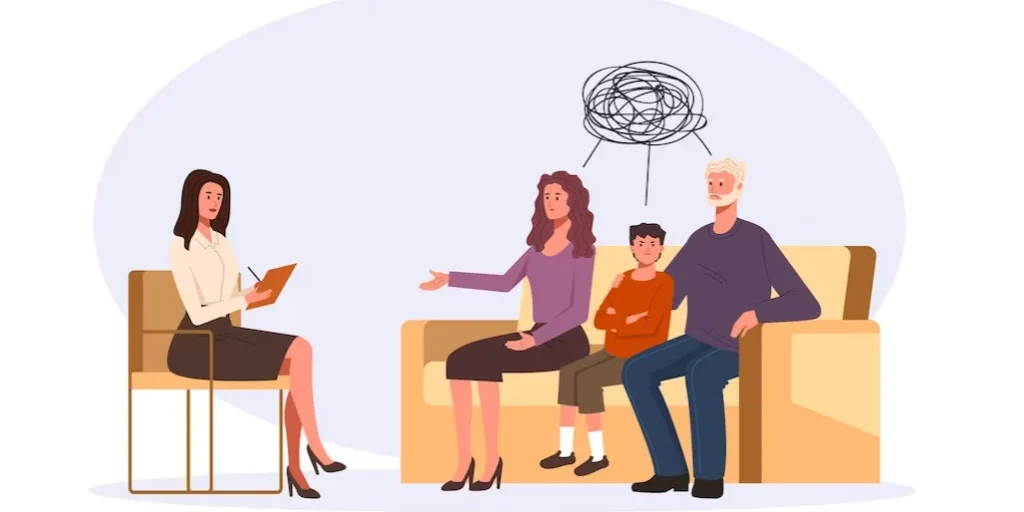
Arbor Circle – Main Campus
Arbor Circle - Main Campus is located in Grand Rapids, Michigan. Arbor Circle - Main Campus has beco...

Saint Mary’s Healthcare – Psychiatric Medical Unit
Pine Rest Healthcare, formerly known as St. Mary’s Healthcare, offers a full continuum of addiction ...

Community Mental Health Services
Community Mental Health Services is a public rehab located in Holland, Michigan. Community Mental He...

Assessment Center
Assessment Center is an outpatient rehab located in Troy, MI. Assessment Center specializes in the t...

Prevention and Training Services
Prevention and Training Services is a rehab facility located in Lansing, MI. Prevention and Training...

Heartline – Lutheran Social Services
Samaritas House Detroit - Heartline is a non-profit rehab located in Detroit, MI. Samaritas House De...

Herrick Medical Center – Behavioral Health
Herrick Medical Center – Behavioral Health is a private rehab located in Tecumseh, Michigan. Herrick...

The Salvation Army Harbor Light – Lawton street
The Salvation Army Harbor Light has skillfully served those suffering from substance abuse addiction...

Hackley Life Counseling – Mercy Health Life
Hackley Life Counseling – Mercy Health Life is a private rehab located in Muskegon, Michigan. Hackle...

Adult Well Being Services
Adult Well Being Services is located in Detroit, Michigan. Adult Well Being Services is a community-...

Henry Ford Allegiance – Outpatient Behavioral Health
The Henry Ford Allegiance Outpatient Behavioral Health Center provides comprehensive dual diagnosis ...

Sobriety House
Sobriety House is located in Detroit, Michigan, and is an addiction treatment center that serves men...

Henry Ford Behavioral Medicine
Henry Ford Behavioral Medicine is a private rehab located in Clinton Township, MI. Henry Ford McComb...

Growth Works
Growth Works provides treatment for chemical dependence and substance abuse by offering an outpatien...

Metro Arts Therapy Services
Metro Arts Therapy Services is a non-profit rehab located in Detroit, Michigan. Metro Arts Therapy S...

Henry Ford Behavioral Health Services
Henry Ford Behavioral Health Services, in Dearborn, Michigan, provides outpatient mental health care...

Huron Behavioral Health
Huron Behavioral Health is a public rehab located in Bad Axe, Michigan. Huron Behavioral Health spec...

Phoenix House
Phoenix House is a private rehab located in Calumet, Michigan. Phoenix House offers residential (inp...

Victory Clinical Services IV
Victory Clinical Services IV is a private rehab located in Saginaw, Michigan. Victory Clinical Servi...

Dawn Farm – Spera
Dawn Farm is located in Ann Arbor, Michigan. Dawn Farm rovides a safe, recovery-friendly environment...

Victory Clinical Services
Victory Clinical Services is a private rehab located in Kalamazoo, Michigan. Victory Clinical Servic...

AuSable Valley Community Mental Health
AuSable Valley Community Mental Health is a public rehab located in Mio, Michigan. AuSable Valley Co...

Oaklawn Psychiatric Center
Oaklawn Psychiatric Center - Madison street offers a wide range of mental health and addictions prog...

Salvation Army – Turning Point Programs
Salvation Army - Turning Point Programs is located in Grand Rapids, Michigan. Salvation Army - Turni...

Great Lakes Recovery Center
Great Lakes Recovery Center provides residential and outpatient treatment for adolescents with a Men...

Northeast Guidance Center
Northeast Guidance Center is a private rehab located in Detroit, Michigan. Northeast Guidance Center...

McLaren Flint – Behavioral Health
McLaren Flint – Behavioral Health is a private rehab located in Flint, Michigan. McLaren Flint – Beh...

Gratiot County Community – Mental Health
Gratiot County Community – Mental Health is a public rehab located in Alma, Michigan. Gratiot County...

Michigan Therapeutic Consultants
Michigan Therapeutic Consultants is a private rehab located in Lansing, MI. Michigan Therapeutic Con...

Turning Leaf – Residential Rehabilitation Services
Turning Leaf – Residential Rehabilitation Services is a private rehab located in Lansing, Michigan. ...

Self Help Addiction Rehab – West Grand Boulevard
Self-Help Addiction Rehab - West Grand Boulevard offers outpatient and inpatient services for indivi...

Development Centers
Development Centers is a private rehab located in Hamtramck, Michigan. Development Centers specializ...

Eastwood Clinics
Eastwood Clinics is a non-profit rehab located in Clinton Township, Michigan. Eastwood Clinics speci...

Family Service and Childrens Aid
Family Service and Childrens Aid is a private rehab located in Jackson, Michigan. Family Service and...

Reality Counseling Services
Reality Counseling Services is an outpatient facility that offers treatment for individuals dealing ...

Mariners Inn
Mariners Inn, in Detroit, Michigan, is a 12 step-focused drug and alcohol rehab for adult men. They ...

Cherry Street Health Services – Southside Health
Cherry Street Health Services – Southside Health is a private rehab located in Grand Rapids, Michiga...

List Psychological Services – 467 North State
List Psychological Services is a private group practice specializing in behavioral health care; incl...

Apex Behavioral Health
Apex Behavioral Health is a private rehab located in Dearborn, Michigan. Apex Behavioral Health spec...

Pine Rest Christian Mental Health Services – Southwest Clinic
Pine Rest Christian Mental Health Services - Southwest Clinic is located in Grandville, Michigan. Pi...

Rose Hill Center
Rose Hill Center is a private rehab located in Holly, Michigan. Rose Hill Center specializes in the ...

Sault Tribe Behavioral Health Program
Sault Tribe Behavioral Health Program offers a variety of culturally sensitive outpatient mental hea...

ACAC – Alcohol and Chemical Abuse Consultants
Alcohol and Chemical Abuse Consultants (ACAC) provides outpatient services for mental health and sub...

Guiding Light Mission
Guiding Light is an accredited faith led drug and alcohol rehab in Grand Rapids, MI for men and wome...

List Psychological Services
List Psychological Services is a private group practice specializing in behavioral health care; incl...

Sacred Heart Rehabilitation Center
Sacred Heart Rehabilitation Center is a private rehab located in Bay City, Michigan. Sacred Heart Re...

Ottagan Addictions Recovery – Harbor House for Women
Ottagan Addictions Recovery - Harbor House for Women is a residential treatment facility for women a...

Clinton Counseling Center
Clinton Counseling Center provides comprehensive outpatient treatment to individuals and families to...

Pathways
Pathways - Hubbard Street offers outpatient treatment for individuals with alcohol and/or substance ...

West Michigan Community Mental Health
West Michigan Community Mental Health is located in Baldwin, Michigan. West Michigan Community Menta...

Eastside Outpatient Services
Eastside Outpatient Services is a state-of-art facility trained and fully equipped to assist patient...

Community Network Services
Community Network Services is a private rehab located in Waterford, Michigan. Community Network Serv...

Guest House
Guest House is an accredited Catholic faith based addiction treatment center situated in Lake Orion,...

Growth Works
Growth Works provides treatment for chemical dependence and substance abuse by offering an outpatien...

Positive Images – East Warren Avenue
Positive Images - East Warren Avenue offers inpatient and outpatient services for women with alcohol...

Community Mental Health Services
Community Mental Health Services is a public rehab located in Reed City, Michigan. Community Mental ...

Inter Act of Michigan
Inter Act of Michigan is a non-profit rehab located in Kalamazoo, Michigan. Inter Act of Michigan sp...

Heron Ridge Associates
Heron Ridge Associates, in Ann Arbor, Michigan, provides outpatient mental and behavioral healthcare...

Gilmore Community Healing Centers
Gilmore Community Healing Center has served over 50,000 people struggling with mental health problem...

Community Mental Health Services
Community Mental Health Services is a public rehab located in Midland, Michigan. Community Mental He...

Jewish Family Service
Jewish Family Service is a private rehab located in Oak Park, Michigan. Jewish Family Service specia...
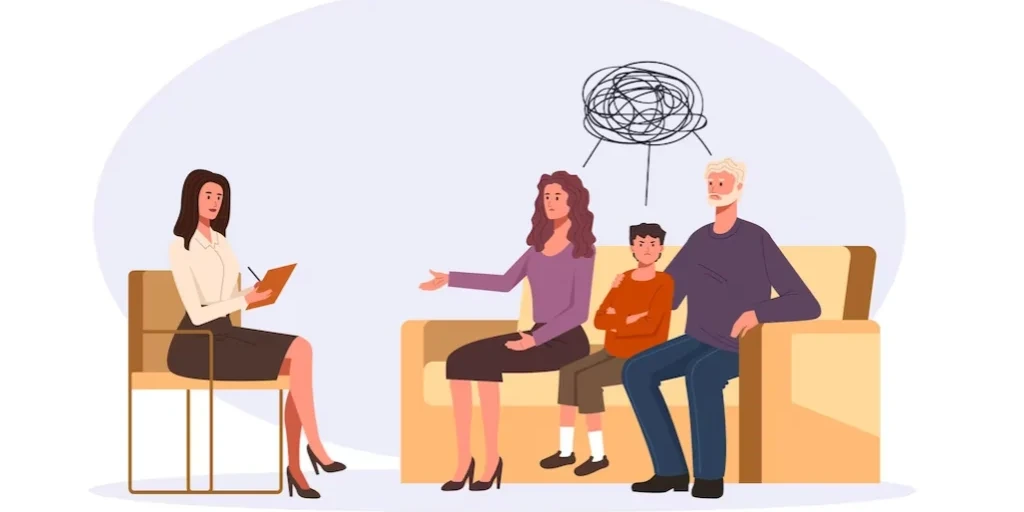
NPRC – Nardin Park Recovery Center
NPRC - Nardin Park Recovery Center is a non profit rehab located in Detroit, MI. NPRC - Nardin Park ...

Alano Club
Alano Club is a non-profit rehab located in Charlevoix, Michigan. Alano Club specializes in the trea...

Advanced Counseling Services
Advanced Counseling Services is located in Southfield, Michigan. Advanced Counseling Services provid...

Grand Rapids Counseling Services
Grand Rapids Counseling Services is an outpatient rehab located in Grand Rapids, MI. Grand Rapids Co...

Psychology Associates – Grand Rapids
Psychology Associates – Grand Rapids is a private rehab located in Grand Rapids, Michigan. Psycholog...

Bay Psychological Associates
Bay Psychological Associates is a private rehab located in Bay City, Michigan. Bay Psychological Ass...

Central City Integrated Health
Central City Integrated Health, situated in the heart of Central City, stands as a beacon for indivi...

RU Recovery Ministries – Peoples Baptist Church
RU Recovery Ministries - Peoples Baptist Church is a faith based program designed to help individual...

Blue Water Clubhouse
Blue Water Clubhouse is a public rehab located in Port Huron, Michigan. Blue Water Clubhouse special...

Hidden Brook Counseling Services
Hidden Brook Counseling Services provides outpatient services for individuals struggling with behavi...

Harbortown Treatment Center
Harbortown Treatment Center is a private rehab located in Benton Harbor, Michigan. Harbortown Treatm...

Working for the Lord Ministry – Drug Prevention
Working for the Lord Ministry – Drug Prevention is a private rehab located in Lincoln Park, Michigan...

Ten16 Recovery Network
Ten16 Recovery Network has a proud history of providing services to people impacted by substance use...

Centra Wellness Network
Centra Wellness Network is a public rehab located in Manistee, Michigan. Centra Wellness Network spe...
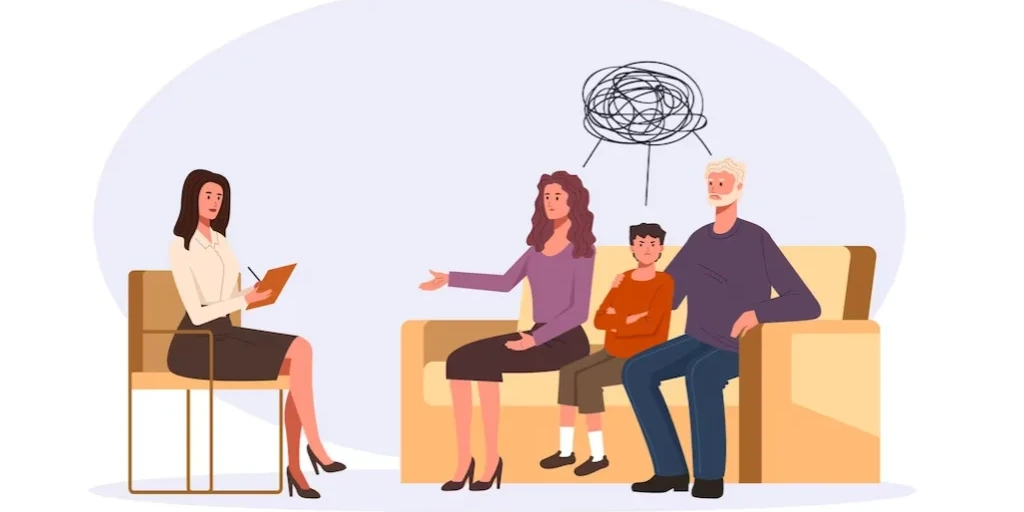
Oakland Psychological Clinic
Oakland Psychological Clinic is a private rehab located in Flint, Michigan. Oakland Psychological Cl...

Get Back Up
Get Back Up, Inc., is a state of the art, comprehensive Residential Substance Abuse Treatment Facili...

Western Michigan University – Behavioral Health
Western Michigan University - Behavioral Health is an accredited outpatient treatment for substance ...

Life Choices
Life Choices is a private rehab located in Detroit, Michigan. Life Choices specializes in the treatm...

Plainwell Counseling Center
Plainwell Counseling Center offers outpatient treatment for individuals struggling with mental healt...

Sunshine Treatment Institute
Sunshine Treatment Institute is a private rehab located in Detroit, Michigan. Sunshine Treatment Ins...

Ennis Counseling Center for Children
Ennis Counseling Center for Children is a private rehab located in Flint, Michigan. Ennis Counseling...

Pine Rest Christian Mental Health Services
Pine Rest Christian Mental Health Services - Meadow Run is located in Hastings Michigan. Pine Rest C...

Centro Multicultural La Familia
Centro Multicultural La Familia offers outpatient mental health and substance abuse counseling sessi...

Family Outreach Center
Family Outreach Center is offer mental health and substance abuse outpatient services for individual...

Sparrow Behavioral Health Services
Sparrow Behavioral Health Services is a private rehab located in Lansing, Michigan. Sparrow Behavior...

Detroit East Community Mental Health Center – Mack Avenue
Detroit East Community Mental Health Center – Mack Avenue is a private rehab located in Detroit, Mic...

List Psychological Services
List Psychological Services is a private group practice specializing in behavioral health care; incl...

Bay Mills Health Center – Substance Abuse Program
Bay Mills Health Center - Substance Abuse Program is a public rehab located in Brimley, MI. Bay Mill...

Oakland Psychological Clinic
Oakland Psychological Clinic, in Bloomfield Hills, Michigan, is an outpatient mental and behavioral ...

Ottagan Addictions Recovery
Ottagan Addictions Recovery offers outpatient and intensive outpatient services for individuals affe...

Garden City Hospital’s Center for Counseling
Garden City Hospital’s Center for Counseling is a private rehab located in Garden City, Michigan. Ga...

Hegira Health – Community Outreach for Psychiatric Emergencies
Hegira Program - Community Outreach for Psychiatric Emergencies is located in Livonia, Michigan. Heg...

Sacred Heart Rehabilitation Center – Serenity Hills
The nonprofit Sacred Heart Rehabilitation Center in Serenity Hills is a behavioral healthcare organi...

Foundations Detroit
Foundations Detroit treats individuals with co-occurring addiction and mental health concerns by pro...

New Passages Psychological Services
New Passages Psychological Services is a private rehab located in Flint, Michigan. New Passages Psyc...

Pine Rest Christian Mental Health Services
Pine Rest Christian Mental Health Services - Silver Drive is located in Traverse City, Michigan. At ...

West Michigan Community Mental Health
West Michigan Community Mental Health is located in Hart, Michigan. West Michigan Community Mental H...

West Michigan Community Mental Health
West Michigan Community Mental Health is located in Ludington, Michigan. West Michigan Community Men...

Hegira Health, Inc. – Hegira House
Hegira Health, Inc.--Hegira House, in Westland, Michigan, provides outpatient addiction treatment fo...

Memorial Healthcare – Behavioral Health
Memorial Healthcare–Behavioral Health, in Owosso, Michigan, provides comprehensive mental health and...

Hegira Health – Livonia Counseling
Hegira Health – Livonia Counseling is a private rehab located in Livonia, Michigan. Hegira Health – ...

Harbor Hall – Outpatient
Harbor Hall - Outpatient is a nonprofit rehab located in Cheboygan, Michigan. Harbor Hall - Outpatie...

Northern Lakes Community Mental Health
Northern Lakes Community Mental Health is a public rehab located in Grayling, Michigan. Northern Lak...

New Light Recovery Center
Based in Highland Park, Michigan, New Life Recovery Center stands as a CARF-accredited addiction reh...

Pine Rest Christian Mental Health Services – Christian Counseling Center
Pine Rest Christian Mental Health Services - Christian Counseling Center is located in Grand Rapids,...

University of Michigan – Addiction Treatment Services
University of Michigan – Addiction Treatment Services is a private rehab located in Ann Arbor, Michi...

Alcoholics For Christ – Troy Assembly of God
Alcoholics For Christ - Troy Assembly of God is located in Troy, Michigan. Alcoholics For Christ - T...

Henry Ford Allegiance Addiction Recovery Center
Henry Ford Allegiance Addiction Recovery Center is located in Jackson, Michigan. Henry Ford Allegian...

Hegira Health – Livonia Counseling Center
Hegira Programs - Livonia Counseling Center is located at the corner of Schoolcraft and Newburgh Roa...

Pine Rest Christian Mental Health Services
Pine Rest Christian Mental Health Services - West Centre Avenue is located in Portage, Michigan. Pin...

National Council on Alcoholism and Drug Dependence Greater Detroit Area
The National Council on Alcoholism and Drug Dependence Greater Detroit Area (NCADD-GDA) - McNichols ...

Hegira Health – Children’s Outpatient Services
Hegira Programs - Children's Outpatient Services is located in Westland, Michigan. Hegira Programs -...

Barry County Community Mental Health
Barry County Community Mental Health Authority, commonly referred to as BCCMHA, provides mental heal...

Henry Ford Allegiance Behavioral Health Services
Henry Ford Allegiance Behavioral Health Services - Springport Road is located in Jackson, Michigan. ...

Alcoholics For Christ – Mt Morris Community Church
Alcoholics For Christ - Mt Morris Community Church is located in Mt. Morris, Michigan. Alcoholics Fo...

Advanced Counseling Services
Advanced Counseling Services is located in Taylor, Michigan. Advanced Counseling Services provides h...

Self – Help Addiction Rehab
Self-Help Addiction Rehab - Chicago Road offers outpatient and inpatient services for individuals wi...

Alcoholics For Christ – Baber Memorial AME Church
Alcoholics For Christ - Baber Memorial AME Church is located in Detroit, Michigan. Alcoholics For Ch...

Hegira Health – Next Step Clubhouse
Hegira Programs - Next Step Clubhouse is located in Inkster, Michigan. HHegira Programs - Next Step ...

Self – Help Addiction Rehab – Maybury Grand
Self-Help Addiction Rehab - Maybury Grand offers outpatient and inpatient services for individuals w...

Michigan Medicine – Briarwood Med Rehab
Michigan Medicine - Briarwood Med Rehab is located in Ann Arbor, Michigan. Michigan Medicine - Briar...

New Oakland Family Centers
New Oakland Family Centers provides the State of Michigan’s most complete spectrum of quality, compa...

A Healing Place
A Healing Place is a private rehab located in Jackson, Michigan. A Healing Place specializes in the ...

Pathways Chemical Dependency
Pathways Chemical Dependency is a private rehab located in Saginaw, Michigan. Pathways Chemical Depe...

The Counseling Training Clinic at EMU
The Counseling Training Clinic at EMU is a private rehab located in Ypsilanti, Michigan. The Counsel...

Michigan Department of Corrections – Reentry Services
The Michigan Department of Corrections provides evidence-based Reentry Services to probationers, par...

New Light Consultants
New Light Consultants is an outpatient clinic dedicated to provide mental health and substance abuse...

Awakenings Rehabilitation
Awakenings Rehabilitation is a substance abuse treatment designed those who want to achieve long-las...

Community Mental Health – Cedar Street
Community Mental Health - Cedar Street is an outpatient counseling for adults who are dealing with m...

VA Ann Arbor Healthcare System – Green Road Community Outpatient Clinic
VA Ann Arbor Healthcare System - Green Road Community Outpatient Clinic is an outpatient clinic loca...

Detroit Recovery Project – Eastside Health & Wellness Recovery Resource Center
Detroit Recovery Project - Eastside Health & Wellness Recovery Resource Center is a non-profit corpo...

VA Ann Arbor Healthcare System – Packard Road Community Outpatient Clinic
VA Ann Arbor Healthcare System - Packard Road Community Outpatient Clinic is an outpatient clinic lo...

Beverly Hills Therapy Group
Beverly Hills Therapy Group is a private rehab located in Franklin, Michigan. Beverly Hills Therapy ...

Cherry Health – College SE
Cherry Health - College SE is an independent, non-profit Federally Qualified Health Center (FQHC) wi...

Detroit Recovery Project – Grand Boulevard
Detroit Recovery Project - Westside Health & Wellness Recovery Resource Center is a non-profit corpo...

Mission Teens – The Lion’s Den MBTC
Mission Teens – The Lion’s Den MBTC (Mission Bible Training Center), located in Roscommon Michigan, ...

Cherry Health – Townsend Street
Cherry Health Townsend Street, located in Detroit, Michigan, provides person-centered reentry servic...

Great Lakes Recovery Centers
Great Lakes Recovery Centers provides outpatient treatment for adults and children with a Mental Hea...

Great Lakes Recovery Centers – Women’s New Hope House
Great Lakes Recovery Centers - Women’s New Hope House is non-profit organization that provides inpat...

Family Outreach Center – Colrain Street
Family Outreach Center - Colrain Street is offer mental health and substance abuse outpatient servic...

Ann Arbor Comprehensive Treatment Center
Ann Arbor Comprehensive Treatment Center is a private rehab located in Ann Arbor, Michigan. Ann Arbo...

Home Of New Vision
Home of New Vision is a non-profit organization that provides gender-specific programs and specializ...

KPEP – Park Street
KPEP - Park Street provides a live-in residence for individuals who need a more structure than regul...

Stonecrest Behavioral Health Hospital
Stonecrest Center is a residential treatment for individuals with a mental health diagnosis. The pro...

Mercy Health Partners Life Counseling
Mercy Health Partners is a non - profit hospital located in Norton Shores, MI. Mercy Health Partners...

Mercy Health Partners Life Counseling
Mercy Health Partners is a non - profit hospital located in Muskegon, MI. Mercy Health Partners spec...

Western Michigan Comprehensive Treatment Center
Western Michigan Comprehensive Treatment Center provides a comprehensive treatment approach for indi...

C and S Psychological Service
C and S Psychological Service is a private rehab located in Troy, Michigan. C and S Psychological Se...

United Psychological Services
United Psychological Services is a private rehab located in Shelby, Michigan. United Psychological S...

John D. Dingell VA Medical Center – Pontiac VA Outpatient Clinic
John D. Dingell VA Medical Center - Pontiac VA Outpatient Clinic is a counseling clinic located in D...

VA Ann Arbor Healthcare System – Flint Community Based Outpatient Clinic
VA Ann Arbor Healthcare System - Flint Community Based Outpatient Clinic is an outpatient clinic loc...

Hegira Health – Prevention & Wraparound
Hegira Health – Prevention & Wraparound is a private rehab located in Westland, Michigan. Hegira Hea...

Great Lakes Psychology Group
Great Lakes Psychology Group is a private rehab located in Shelby, Michigan. Great Lakes Psychology ...

Counseling and Therapy Associates
Counseling and Therapy Associates offers outpatient treatment for individuals with alcohol and/or su...

Great Lakes Recovery Centers
Great Lakes Recovery Centers provides outpatient treatment for adults and children with a Mental Hea...

Pine Rest – Psychological Consultation Center
Pine Rest – Psychological Consultation Center is a non-profit rehab located in Grand Rapids, Michiga...

Abundant Community Recovery Services
Abundant Community Recovery Services is a private rehab located in Harper Woods, Michigan. Abundant ...

Sollars and Associates
Sollars and Associates is a private rehab located in Commerce Township, Michigan. Sollars and Associ...

NorthWest Initiative – CHOICES
NorthWest Initiative - CHOICES provides a wide array of notable services in order to assist probatio...

Northern Health Center
Northern Health Center offers outpatient treatment for individuals with alcohol addiction and/or sub...

Genesys Hillside Center for Behavioral Services
Genesys Hillside Center for Behavioral Services is a private rehab located in Grand Blanc, Michigan....

Mid – Michigan Recovery Services
Mid-Michigan Recovery Services has a full continuum of substance abuse treatment services, combined ...

Mielke and Weeks Psychological Services
Mielke and Weeks Psychological Services is a private rehab located in Rochester, Michigan. Mielke an...

Family Preservation Services – Wixom
Family Preservation Services – Wixom is a private rehab located in Wixom, Michigan. Family Preservat...

Home Of New Vision – Residential
Home Of New Vision - Residential is a non-profit organization that provides gender-specific programs...

Home Of New Vision – Jackson Recovery Resource Center
Home of New Vision is a CARF accredited drug and alcohol rehab located in Jackson, MI that provides ...

Eastwood Clinics
Eastwood Clinics is a non-profit rehab located in Southfield, MI. Eastwood Clinics specializes in th...

Revival Recovery Center
Revival Recovery Center is an outpatient medical treatment center for substance abuse and mental hea...

Addiction Treatment Services
Located in beautiful Traverse City, a resort community on the shores of northern Michigan's Grand Tr...

The Haven Of Rest Women’s Life Recovery Program
The Haven Of Rest Women's Life Recovery Program is a 12-month Residential Treatment Program for Subs...

Point 21 Recovery
Point 21 Recovery is a women-owned outpatient treatment center located in West Michigan. Our goal is...

Therapy and Counseling Services Macomb County
Therapy and Counseling Services Macomb County is a private rehab located in Mount Clemens, Michigan....

Hope Network Traverse City
Hope Network Traverse City offers comprehensive mental and behavioral health care for youth and adul...

Conner Creek Life Solutions
Conner Creek Life Solutions is an inpatient drug and alcohol detox and rehab for adults in Detroit, ...

Turning Point Recovery Center – Completion House
Turning Point Recovery Centers is a co-occurring substance use disorder rehab center in Pontiac, MI....

Therapy and Counseling Services Saginaw County
Therapy and Counseling Services Saginaw County is a private rehab located in Saginaw, Michigan. Ther...

Biomed Behavioral Healthcare Roseville
Biomed Behavioral Healthcare Roseville is a private rehab located in Roseville, Michigan. Biomed Beh...

1st Step Referral Services
1st Step Referral Services is a private rehab located in Ypsilanti, MI. 1st Step Referral Services s...

Saint Clair County Community Mental Health
Saint Clair County Community Mental Health is a public rehab located in Capac, Michigan. Saint Clair...

Eastwood Clinics
Eastwood Clinics is a non-profit rehab located in Livonia, Michigan. Eastwood Clinics specializes in...

The Haven Of Rest Ministries
The Haven originally provided meals, shelter and the gospel message to homeless men. The Haven has e...

Comprehensive Counseling Center
Comprehensive Counseling Center is committed to providing a broad range of high quality, innovative ...

Addiction Treatment Services – Phoenix Hall
Located in a beautiful downtown neighborhood within walking distance to Grand Traverse Bay, Addictio...

The Salvation Army Harbor Light – Humboldt Street
The Salvation Army provides direct, compassionate service to East Michiganders in need, helping to r...

Metropolitan Rehabilitation Clinic
Metropolitan Rehabilitation Clinic is a private rehab located in Oak Park, MI. Metropolitan Rehabili...

Delta Family Clinic South
Delta Family Clinic South is a private rehab located in Flint, Michigan. Delta Family Clinic South s...

Guidance and Prevention Services
Guidance and Prevention Services is a private rehab located in Royal Oak, Michigan. Guidance and Pre...

Abundant Life Christian Counseling
Abundant Life Christian Counseling is an outpatient rehab located in Livonia, MI. Abundant Life Chri...

KPEP
KPEP provides a live-in residence for individuals who need a more structure than regular probation c...

Development Centers – Adult Services
Development Centers – Adult Services is a private rehab located in Detroit, Michigan. Development Ce...

Hope Network Behavioral Health – Eldon Baker Campus
Hope Network Behavioral Health – Eldon Baker Campus is a private rehab located in Flint, Michigan. H...

Easterseals Michigan
Easterseals Michigan - Northwestern Highway offers outpatient services for families and children who...

Woodlands Behavioral Healthcare Network
Woodlands Behavioral Healthcare Network works with individuals, families, and the community to inspi...

Psychological Consultants of Michigan
Psychological Consultants of Michigan has been providing compassionate outpatient Mental Health and ...

CLASS Prevention services
The CLASS Agency is a non-profit and CARF Accredited organization, the facility provides Prevention...

Counseling Associates
Counseling Associates is a private rehab located in West Bloomfield, Michigan. Counseling Associates...

Sacred Heart Rehabilitation Center
Sacred Heart Rehabilitation Center - East Genesee street is a not-for-profit behavioral healthcare o...

Counseling of Lenawee
Counseling of Lenawee is a private rehab located in Adrian, MI. Counseling of Lenawee specializes in...

Little River’s Behavioral Health
Little River Band of Ottawa Indians offers Be-Da-Bin Behavioral Health program to help people strugg...

Child and Family – Psychological Services
Child and Family – Psychological Services is a private rehab located in Kalamazoo, Michigan. Child a...

Clearview Women’s Treatment Center
Clearview Women’s Treatment Center is a private rehab located in Port Huron, Michigan. Clearview Wom...

The Salvation Army Harbor Light
The Salvation Army provides direct, compassionate service to East Michiganders in need, helping to r...

Alcohol and Drug Services
Alcohol and Drug Services is a non-profit organization that helps to reduce the impact of substance ...

North Oakland Counseling
North Oakland Counseling is a private rehab located in Clarkston, Michigan. North Oakland Counseling...

Sanctuary Ministries
Sanctuary Ministries is a private rehab located in Detroit, Michigan. Sanctuary Ministries specializ...

Oakland Psychological Clinic
Oakland Psychological Clinic is a private rehab located in Southfield, Michigan. Oakland Psychologic...

Lakeridge Outpatient Treatment
Lakeridge Outpatient Treatment is a private rehab located in Detroit, Michigan. Lakeridge Outpatient...

Pines Behavioral Health Services
Pines Behavioral Health Services is a private rehab located in Coldwater, Michigan. Pines Behavioral...

Hope Network
Hope Network helps people who suffer from mental health or substance abuse issues. Hope Network serv...

Battle Creek VA Medical Center – Benton Harbor VA Outpatient Clinic
Benton Harbor VA Outpatient Clinic provides Behavioral Health services in an outpatient setting. Ben...
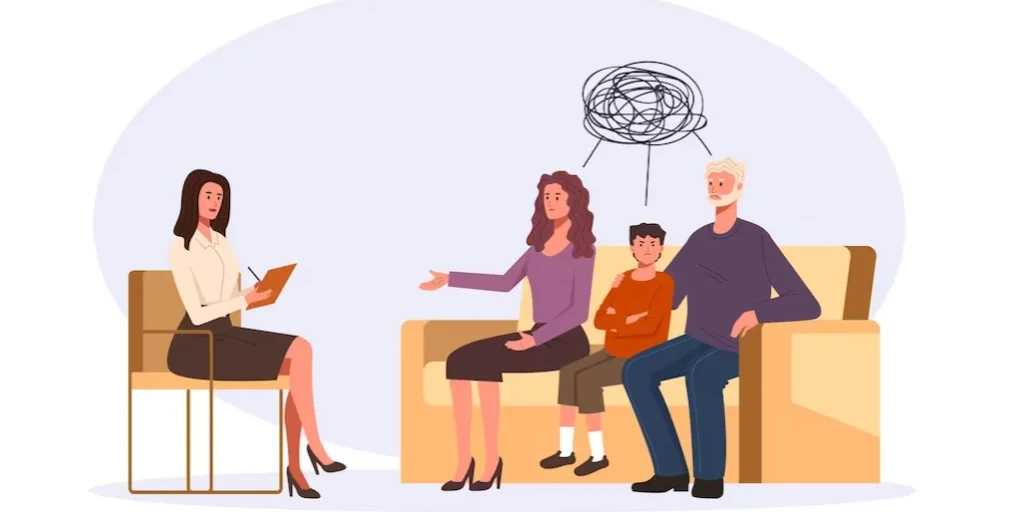
KPEP – Chicago Avenue
KPEP–Chicago Avenue is a residential drug and alcohol rehab for justice-involved adults in Kalamazoo...

KPEP – Olmstead Road
KPEP - Olmstead Road provides a live-in residence for individuals who need a more structure than reg...

Hope Network
Hope Network helps people who suffer from mental health or substance abuse issues. Hope Network serv...

Bio Medical Behavioral Healthcare
Bio Medical Behavioral Healthcare is a private rehab located in Roseville, Michigan. Bio Medical Beh...

Quality Behavioral Health
Based in Highland Park, Michigan, New Life Recovery Center stands as a CARF-accredited addiction reh...

New Oakland Family Centers
New Oakland Family Centers is a drug and alcohol rehab center located in Livonia, MI. They provide o...

Detox Help Center Michigan
Detox Help Center Michigan is a private rehab located in Highland Park, Michigan. Detox Help Center ...

Go – Getters Program
Go – Getters Program is a private rehab located in Detroit, Michigan. Go – Getters Program specializ...

Parkview Counseling Center
Parkview Counseling Center is a private rehab located in Detroit, Michigan. Parkview Counseling Cent...

Apex Behavioral Health – Western Wayne
Apex Behavioral Health - Western Wayne is located in Westland, Michigan. Apex Behavioral Health - We...

Catastrophic and Rehabilitation Management
Catastrophic and Rehabilitation Management is a private rehab located in Grand Rapids, Michigan. Cat...

Options Counseling Services
Options Counseling Services is a private rehab located in Eastpointe, Michigan. Options Counseling S...

Michiana Addictions Prevention
Michiana Addictions Prevention is a private rehab located in Sturgis, Michigan. Michiana Addictions ...

Eleonore Hutzel Recovery Center
DMC Detroit Receiving Hospital is a private rehab located in Detroit, MI. DMC Detroit Receiving Hosp...

Eaton County Counseling Center
Eaton County Counseling Center is a public rehab located in Charlotte, Michigan. Eaton County Counse...

AA – Alcoholics Anonymous
AA – Alcoholics Anonymous is a non-profit rehab located in Norton Shores, Michigan. AA – Alcoholics ...

Transitional Living Center
Transitional Living Center is a private rehab located in Muskegon, Michigan. Transitional Living Cen...

A Ray of Hope
A Ray of Hope is a private rehab located in Pontiac, Michigan. A Ray of Hope specializes in the trea...

Algonac Community Counseling Center
Algonac Community Counseling Center is a private rehab located in Algonac, Michigan. Algonac Communi...

Pathways
Pathways - Century Lane offers outpatient treatment for individuals with alcohol and/or substance ad...

Journies
Journies is a private rehab located in Grand Rapids, Michigan. Journies specializes in the treatment...

Center for Family Recovery
Center for Family Recovery is a private rehab located in Grand Rapids, Michigan. Center for Family R...

Eagle Advancement Institute – Opiate Outpatient
Eagle Advancement Institute – Opiate Outpatient is a private rehab located in West Bloomfield, Michi...

Apex Behavioral Health
Apex Behavioral Health is a private rehab located in Southfield, Michigan. Apex Behavioral Health sp...
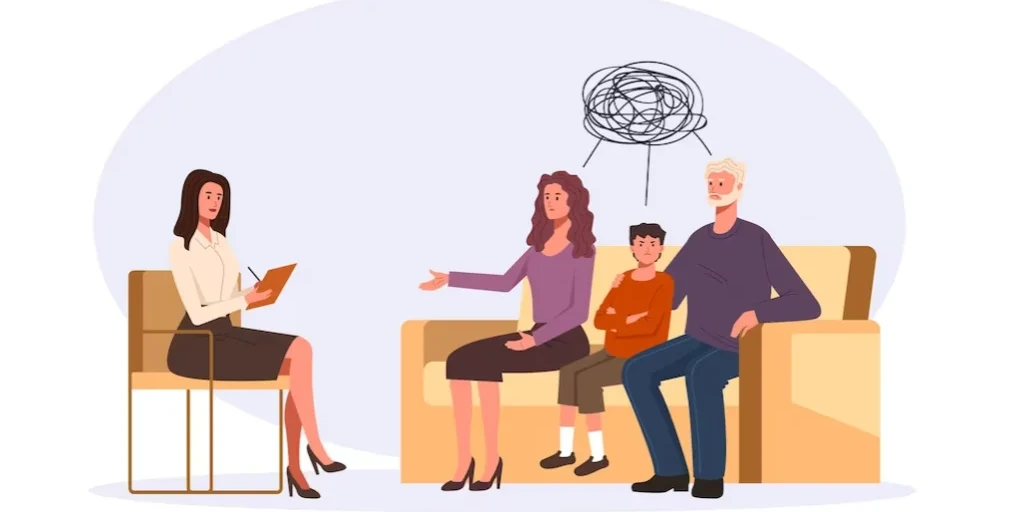
Northern Lakes Community Mental Health
Northern Lakes Community Mental Health is a public rehab located in Cadillac, Michigan. Northern Lak...

Addiction Treatment Services – Dakoske Hall
Addiction Treatment Services – Dakoske Hall is found in Traverse City, Michigan, and welcomes all, r...

Phillip Street Friends – Outpatient
Phillip Street Friends – Outpatient is a private rehab located in Detroit, Michigan. Phillip Street ...

Pathway Family Center
Pathway Family Center is a non-profit rehab located in Southfield, Michigan. Pathway Family Center s...

Solutions to Recovery
Solutions to Recovery offers inpatient and outpatient services for individuals with mental health di...

Coordinating Agency Assessment Service
Coordinating Agency Assessment Service is a private rehab located in Kingsford, Michigan. Coordinati...

AA – Alcoholics Anonymous
AA – Alcoholics Anonymous is a non-profit rehab located in New Buffalo, Michigan. AA – Alcoholics An...

DOT Caring Centers
DOT Caring Centers is a private rehab located in Bay City, Michigan. DOT Caring Centers specializes ...

Northpointe Behavioral Health
Northpointe Behavioral Health is a public rehab located in Iron River, Michigan. Northpointe Behavio...

Alcohol Drug Rehab
Alcohol Drug Rehab is a private rehab located in Detroit, Michigan. Alcohol Drug Rehab specializes i...

ADF Counseling
ADF Counseling is a private rehab located in Commerce, Michigan. ADF Counseling specializes in the t...

Time Out Counseling
Time Out Counseling is a private rehab located in Warren, Michigan. Time Out Counseling specializes ...

Starr Commonwealth
Starr Commonwealth is a non-profit rehab located in Detroit, Michigan. Starr Commonwealth specialize...

Van Buren Community Mental Health Authority – Clinical Services
Van Buren Community Mental Health Authority – Clinical Services is a public rehab located in Bangor,...

Recovery Unlimited Counseling Services
Recovery Unlimited Counseling Services is a private rehab located in Mount Pleasant, MI. Recovery Un...

Cherry Health – Cherry street
Cherry Health–Cherry Street, in Grand Rapids, Michigan, provides outpatient mental and behavioral he...

West Michigan Therapy – Jarman Street
West Michigan Therapy – Jarman Street is a private rehab located in Muskegon, Michigan. West Michiga...

Narconon – Freedom Center
Narconon – Freedom Center is a private rehab located in Albion, Michigan. Narconon – Freedom Center ...

New Center Community Services – GrandDex Plaza
New Center Community Services is committed to providing and promoting quality behavioral health serv...

Alcoholics For Christ – Base Church
Alcoholics For Christ - Base Church is located in Royal Oak , Michigan. Alcoholics For Christ - Base...

Bridge Water Substance Abuce Counceling
Bridge Water Substance Abuce Counceling is a private rehab located in Bay City, Michigan. Bridge Wat...

Detroit LIGHT House Program
Detroit LIGHT House Program offers inpatient and outpatient services for individuals dealing with a ...

Eastwood Clinics
Eastwood Clinics is a private rehab located in Saint Clair, Michigan. Eastwood Clinics specializes i...

Insight Recovery Center
Insight Recovery Center is a private rehab located in Detroit, Michigan. Insight Recovery Center spe...

Metro East Substance Abuse
Metro East began as a outpatient methadone program and today is a comprehensive behavioral health tr...

AA – Alcoholics Anonymous
AA – Alcoholics Anonymous is a non-profit rehab located in Gladwin, Michigan. AA – Alcoholics Anonym...

Ten16 Recovery Network
Ten16 Recovery Network has a proud history of providing services to people impacted by substance use...

Van Buren Community Mental Health Authority – Crisis Stablization
Van Buren Community Mental Health Authority – Crisis Stablization is a public rehab located in Lawre...

Counseling Assessment Associates
Counseling Assessment Associates is a private rehab located in Farmington, Michigan. Counseling Asse...

Cocaine Anonymous – CA
Cocaine Anonymous – CA is a non-profit rehab located in Flint, Michigan. Cocaine Anonymous – CA spec...

Straightways
Straightways is a private rehab located in Kalamazoo, Michigan. Straightways specializes in the trea...

Alcoholism Treatment and Recovery
Alcoholism Treatment and Recovery is a private rehab located in Grand Rapids, Michigan. Alcoholism T...

Jackson Counseling Agency
Jackson Counseling Agency is a private rehab located in Ann Arbor, Michigan. Jackson Counseling Agen...

Great Lakes Recovery Centers
Great Lakes Recovery Centers provides outpatient treatment for adults and children with a Mental Hea...

Drug Education and Compliance Systems
Drug Education and Compliance Systems is a private rehab located in Dearborn, Michigan. Drug Educati...

AA – Alcoholics Anonymous
AA – Alcoholics Anonymous is a non-profit rehab located in Portage, Michigan. AA – Alcoholics Anonym...

AA – Alcoholics Anonymous
AA – Alcoholics Anonymous is a non-profit rehab located in Norton Shores, Michigan. AA – Alcoholics ...

AA – Alcoholics Anonymous – Stepping Stones
AA – Alcoholics Anonymous – Stepping Stones is a non-profit rehab located in South Haven, Michigan. ...

AA – Alcoholics Anonymous
AA – Alcoholics Anonymous is a non-profit rehab located in Grand Haven, Michigan. AA – Alcoholics An...

Calhoun County – Behavioral Health
Calhoun County – Behavioral Health is a public rehab located in Albion, Michigan. Calhoun County – B...

Superior Psychological Services
Superior Psychological Services is a private rehab located in Kingsford, Michigan. Superior Psycholo...

Center of Behavioral Therpy
Center of Behavioral Therpy is a private rehab located in Livonia, Michigan. Center of Behavioral Th...

Lexington Community Counseling
Lexington Community Counseling provides safe and comfortable living experiences for adults with deve...

Northwest Drug Treatment
Northwest Drug Treatment is a private rehab located in Detroit, Michigan. Northwest Drug Treatment s...

Family Services – Alcohol and Drug Counseling
Family Services – Alcohol and Drug Counseling is a private rehab located in Southfield, Michigan. Fa...

Great Lakes Recovery Centers
Great Lakes Recovery Centers is a non-profit rehab located in Menominee, Michigan. Great Lakes Recov...

AA – Alcoholics Anonymous
AA – Alcoholics Anonymous is a non-profit rehab located in Detroit, Michigan. AA – Alcoholics Anonym...

Vista Maria
Vista Maria is a private rehab located in Dearborn Heights, Michigan. Vista Maria specializes in the...

Recovery Unlimited Counseling Services
Recovery Unlimited Counseling Services is a private rehab located in Saint Louis, Michigan. Recovery...

New Center Mental Health Services – North Park
New Center Community Services is committed to providing and promoting quality behavioral health serv...

Oakridge Counseling
Oakridge Counseling is a private rehab located in Battle Creek, Michigan. Oakridge Counseling specia...

Ionia County Community Mental Health
Ionia County Community Mental Health is a public rehab located in Portland, Michigan. Ionia County C...

AA – Alcoholics Anonymous – Monroe Street Group
AA – Alcoholics Anonymous – Monroe Street Group is a non-profit rehab located in Coldwater, Michigan...

Premier Services of Michigan
Premier Services of Michigan is a private rehab located in Warren, Michigan. Premier Services of Mic...

Community Support and Treatment Services
Community Support and Treatment Services is a private rehab located in Ypsilanti, Michigan. Communit...

Recovery Consultants
Recovery Consultants is a privately owned corporation specifically focused on dealing with substance...

Clean House
Clean House is a private rehab located in Southfield, Michigan. Clean House specializes in the treat...

Gateway Community Mental Health
Gateway Community Mental Health is a private rehab located in Detroit, Michigan. Gateway Community M...

Generation Rehabilitation Center
Generation Rehabilitation Center is a private rehab located in Muskegon, Michigan. Generation Rehabi...

Eastwood Clinics – Conner House
Eastwood Clinics – Conner House is a private rehab located in Detroit, Michigan. Eastwood Clinics – ...

Washtenaw Alano Club
Washtenaw Alano Club is a non-profit rehab located in Ann Arbor, Michigan. Washtenaw Alano Club spec...

Bay Area Counseling
Bay Area Counseling is a private rehab located in Traverse City, Michigan. Bay Area Counseling speci...

AA – Alcoholics Anonymous
AA – Alcoholics Anonymous is a non-profit rehab located in Traverse City, Michigan. AA – Alcoholics ...

Detroit Rescue Mission Ministries – Genesis House III
Detroit Rescue Mission Ministries–Genesis House III is a drug and alcohol rehab for women in Detroit...

Transition House
Transition House is a private rehab located in Flint, Michigan. Transition House specializes in the ...
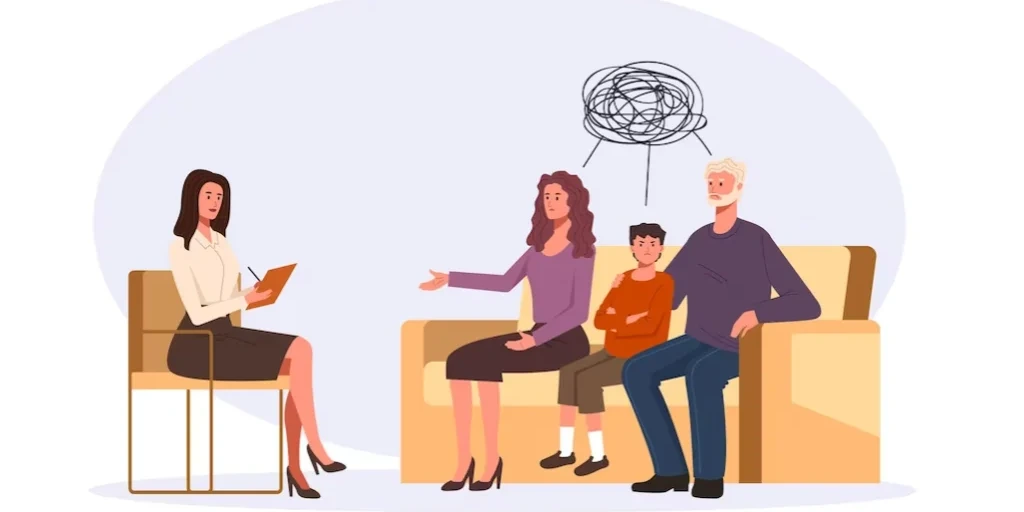
University Psychiatric Center – Substance Abuse
University Psychiatric Center – Substance Abuse is a private rehab located in Livonia, Michigan. Uni...
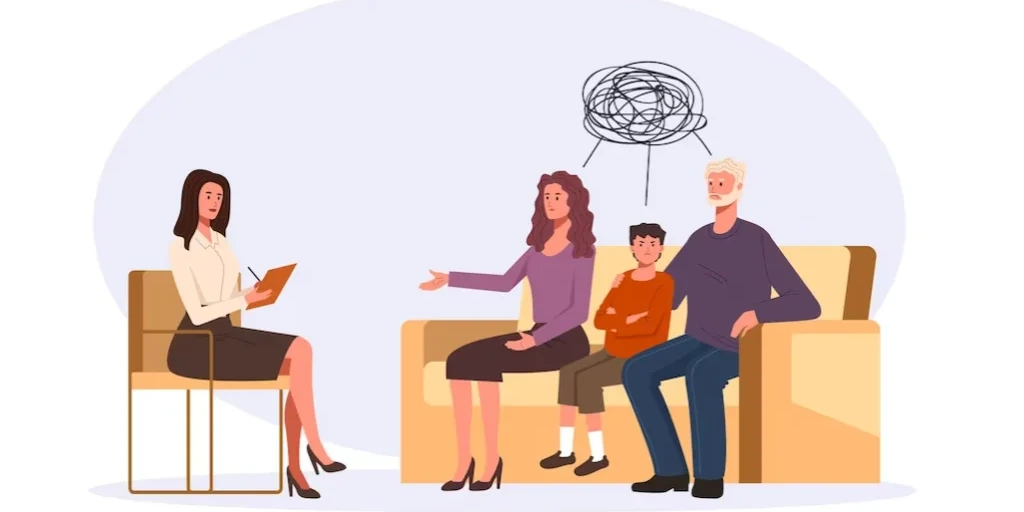
Oakland Psychological Clinic
Oakland Psychological Clinic is a private rehab located in Milford, Michigan. Oakland Psychological ...

EDM Treatment Center
EDM Treatment Center is a private rehab located in Saginaw, Michigan. EDM Treatment Center specializ...

Psychology Associates – Calumet
Psychology Associates – Calumet is a private rehab located in Calumet, Michigan. Psychology Associat...

Alano Club South
Alano Club South is a non-profit rehab located in Grand Rapids, Michigan. Alano Club South specializ...

Hegira Programs – Northville Counseling Center
Hegira Programs - Northville Counseling Center is located in Northville, Michigan. Hegira Programs -...

Counseling Associates
Counseling Associates is a private rehab located in Southfield, Michigan. Counseling Associates spec...

Intervention and Rehab Associates
Intervention and Rehab Associates is a private rehab located in Freeland, Michigan. Intervention and...

National Council on Alcoholism and Addiction
National Council on Alcoholism and Addiction is a private rehab located in Flint, Michigan. National...

Pine Rest Christian Mental Health Services – Jellema House
Pine Rest Christian Mental Health Services–Jellema House is a residential drug and alcohol rehab for...

Livingston County Mental Health
Livingston County Mental Health is a public rehab located in Howell, Michigan. Livingston County Men...

Sequoia Recovery Services
Sequoia Recovery Services is a private rehab located in Pontiac, Michigan. Sequoia Recovery Services...

Family Hope Center
Family Hope Center is an outpatient rehab located in Bay City, MI. Bay Area Consultants - Family Hop...

Structured Living
Structured Living is a private rehab located in Ann Arbor, Michigan. Structured Living specializes i...

Evergreen Counseling Center
Evergreen Counseling Center is a private rehab located in Sterling Heights, Michigan. Evergreen Coun...

AA – Alcoholics Anonymous
AA – Alcoholics Anonymous is a non-profit rehab located in Charlotte, Michigan. AA – Alcoholics Anon...

Michigan Behavioral Medicine
Michigan Behavioral Medicine provides a range of mental health services for adults, couples, and fam...

Ottagan Addictions Treatment
Ottagan Addictions Treatment offers outpatient treatment for individuals with alcohol and/or substan...

Concepts in Counseling
Concepts in Counseling is a private rehab located in Lapeer, Michigan. Concepts in Counseling specia...

Westlund Guidance Clinic
Westlund Guidance Clinic is a private rehab located in Saginaw, Michigan. Westlund Guidance Clinic s...

Adult Well Being Services
Adult Well Being Services is located in Romulus, Michigan. Adult Well Being Services is a community-...

Great Lakes Counseling
Great Lakes Counseling is a private rehab located in Utica, Michigan. Great Lakes Counseling special...

Star Center
Star Center is a drug and alcohol rehab center located in Delaware, Ohio. They provide addiction tre...

New Way Counseling
New Way Counseling offers outpatient treatment for individuals with alcohol and/or substance addicti...

Great Lakes Recovery Centers
Great Lakes Recovery Centers provides outpatient services for individuals dealing with mental health...

Eastern Clinic
Eastern Clinic is a private rehab located in Grand Rapids, Michigan. Eastern Clinic specializes in t...

New Life Home for Recovering Women
New Life Home for Recovering Women is a private rehab located in Detroit, Michigan. New Life Home fo...

HelpNet Counseling Services
HelpNet Counseling Services is a private rehab located in Saginaw, Michigan. HelpNet Counseling Serv...

Gateway Counseling Center
Gateway Counseling Center is an outpatient rehab located in Madison Heights, MI. Gateway Counseling ...

DOT Caring Centers
DOT Caring Centers is a private rehab located in Owosso, Michigan. DOT Caring Centers specializes in...

North Country Mental Health
North Country Mental Health is a public rehab located in Kalkaska, Michigan. North Country Mental He...

Samaritan Counseling Centers of The Western Upper Peninsula
Samaritan Counseling Centers of The Western Upper Peninsula is a private rehab located in Iron River...

Project Rehab Men’s Recovery Center
Project Rehab Men’s Recovery Center is a private rehab located in Grand Rapids, Michigan. Project Re...

Insight
Insight is a private rehab located in Dearborn, Michigan. Insight specializes in the treatment of al...

Holland Alano Association
Holland Alano Association is a private rehab located in Holland, MI. Holland Alano Association speci...

Atrium Rehabilitation
Atrium Rehabilitation is a private rehab located in Garden City, Michigan. Atrium Rehabilitation spe...

Northeast Michigan Community Mental Health Authority
Northeast Michigan Community Mental Health Authority is a public rehab located in Hillman, Michigan....

Brooks Rehabilitation Solution
Brooks Rehabilitation Solution is a private rehab located in Ypsilanti, Michigan. Brooks Rehabilitat...

Guidance and Prevention Services
Guidance and Prevention Services is a private rehab located in Hamtramck, Michigan. Guidance and Pre...

Hope House for Women
Hope House for Women is a co-occurring substance abuse and mental health drug rehab center in Jonesv...

Ascension Eastwood Behavioral Health at Schoenherr
Eastwood Clinics - Shelby Township is a non-profit rehab located in Utica, MI. Eastwood Clinics - Sh...

Nexus Family Services
Nexus Family Services is a non-profit rehab located in Traverse City, Michigan. Nexus Family Service...

Ionia County Community Mental Health
Ionia County Community Mental Health is a public rehab located in Ionia, Michigan. Ionia County Comm...

Guest House Treatment
Guest House Treatment is a private rehab located in Lake Orion, Michigan. Guest House Treatment spec...

Alano Club
Alano Club is a non-profit rehab located in Traverse City, Michigan. Alano Club specializes in the t...

Drug Medical and Rehabilitation Center
Drug Medical and Rehabilitation Center is a private rehab located in Ypsilanti, Michigan. Drug Medic...

Downriver Mental Health and Advanced Counceling
Downriver Mental Health and Advanced Counceling is a private rehab located in Taylor, Michigan. Down...

Al – Anon and Al – Ateen
Al – Anon and Al – Ateen is a non-profit rehab located in Waterford, Michigan. Al – Anon and Al – At...

Treatment Works
Treatment Works is a private rehab located in Livonia, Michigan. Treatment Works specializes in the ...

Child and Family Services – Traverse City
Child and Family Services – Traverse City is a private rehab located in Traverse City, Michigan. Chi...

Community Healing Centers
Community Healing Centers Niles is a Behavioral Health Treatment Center specializing in both Substan...

Ann Arbor Consultation Services
Ann Arbor Consultation Services is a private rehab located in Brighton, Michigan. Ann Arbor Consulta...

National Council on Alcoholism and Addiction
National Council on Alcoholism and Addiction is a private rehab located in Lansing, Michigan. Nation...

Community Pathway
Community Pathway is a private rehab located in Dearborn, Michigan. Community Pathway specializes in...

SPGB Services
SPGB Services is a private rehab located in Kalamazoo, Michigan. SPGB Services specializes in the tr...

Insight Recovery Center
Insight Recovery Center is a private rehab located in Saginaw, Michigan. Insight Recovery Center spe...

BWS Alano Center
BWS Alano Center is a private rehab located in Port Huron, Michigan. BWS Alano Center specializes in...

AA – Alcoholics Anonymous
AA – Alcoholics Anonymous is a non-profit rehab located in Centreville, Michigan. AA – Alcoholics An...

Americare Rehabilitation
Americare Rehabilitation is a private rehab located in Detroit, Michigan. Americare Rehabilitation s...

Alano House
Alano House is a private rehab located in Flint, Michigan. Alano House specializes in the treatment ...

Battle Creek VA Medical Center – Lansing VA Outpatient Clinic
PAR Rehab Services is a drug and alcohol rehab located in Lansing, Michigan. They offer intensive ou...

Washtenaw County – Community Mental Health
Washtenaw County – Community Mental Health is a public rehab located in Ypsilanti, Michigan. Washten...

Community Mental Health Services
Community Mental Health Services is a public rehab located in Howell, Michigan. Community Mental Hea...

Oakland Family Services – Substance Abuse
Oakland Family Services – Substance Abuse is a private rehab located in Rochester Hills, Michigan. O...

Corvel Rehabilitation
Corvel Rehabilitation is a private rehab located in Traverse City, Michigan. Corvel Rehabilitation s...

Al – Anon and Al – Ateen
Al – Anon and Al – Ateen is a non-profit rehab located in Howell, Michigan. Al – Anon and Al – Ateen...

Al – Anon
Al – Anon is a non-profit rehab located in Cadillac, Michigan. Al – Anon specializes in the treatmen...

Recovery Consultants
Recovery Consultants is a privately owned corporation specifically focused on dealing with substance...

A Task Force Against Chemicals
A Task Force Against Chemicals is a private rehab located in Grand Rapids, Michigan. A Task Force Ag...

Alano Club
Alano Club is a non-profit rehab located in Saginaw, Michigan. Alano Club specializes in the treatme...

Parkview Counseling Center
Parkview Counseling Center is a private rehab located in Pontiac, Michigan. Parkview Counseling Cent...

Community Mental Health Services
Community Mental Health Services is a public rehab located in Grand Haven, Michigan. Community Menta...

Pioneer Counseling Center
Pioneer Counseling Center is a private rehab located in Sterling Heights, Michigan. Pioneer Counseli...

Ionia County Community Mental Health
Ionia County Community Mental Health is a public rehab located in Belding, Michigan. Ionia County Co...
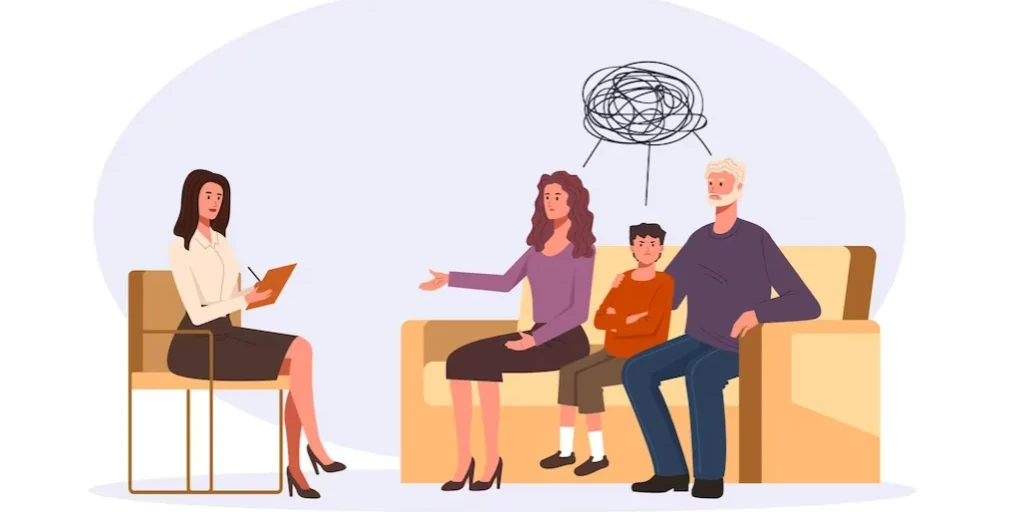
Van Buren Community Mental Health Authority – Outpatient
Van Buren Community Mental Health Authority – Outpatient is a public rehab located in South Haven, M...

Family Center For Psychological Services
Family Center For Psychological Services is a private rehab located in Bloomfield Hills, Michigan. F...

Chelsea Arbor Addiction Treatment Center
Chelsea Arbor Addiction Treatment Center is a private rehab located in Ann Arbor, Michigan. Chelsea ...

Alano Club the Greater Muskegon
Alano Club the Greater Muskegon is a non-profit rehab located in Muskegon, Michigan. Alano Club the ...

PAR Rehab Services
PAR Rehab Services offer neurorehabiliation and comprehensive psychological services to individuals ...

Saint Josephs Mercy Center for Behavioral Medicine
Saint Josephs Mercy Center for Behavioral Medicine is a private rehab located in Clinton Township, M...

Mental Health and Addictions
Mental Health and Addictions is a private rehab located in Detroit, Michigan. Mental Health and Addi...

Copper Country Community Mental Health Services
Copper Country Community Mental Health Services is located in Ontonagon, Michigan. Copper Country Co...

Nancys Serenity House
Nancys Serenity House is a private rehab located in Madison Heights, Michigan. Nancys Serenity House...

Michiana Addictions
Michiana Addictions is a private rehab located in Three Rivers, Michigan. Michiana Addictions specia...

Promiseland Counseling Services
Promiseland Counseling Services is a private rehab located in Port Huron, Michigan. Promiseland Coun...

New Alternatives
New Alternatives is a private rehab located in Center Line, Michigan. New Alternatives specializes i...

Arbor Circle Counseling Services
Arbor Circle Counseling Services is a private rehab located in Newaygo, Michigan. Arbor Circle Couns...

Ann Arbor Consultation Services
Ann Arbor Consultation Services is a private rehab located in Ann Arbor, Michigan. Ann Arbor Consult...

Surrender House
Surrender House is a private rehab located in Detroit, Michigan. Surrender House specializes in the ...

Keweenaw Bay Indian Community Substance Abuse Programs – KBICSAP
Keweenaw Bay Indian Community Substance Abuse Programs (KBICSAP) is a state licensed facility that o...

Taylor Psychological Clinic
Taylor Psychological Clinic is a private rehab located in Flint, Michigan. Taylor Psychological Clin...

Northern Lakes Community Mental Health
Northern Lakes Community Mental Health is a public rehab located in Houghton Lake, Michigan. Norther...

Daniel Sobel Friendship House
Daniel Sobel Friendship House provides support to adult individuals struggling with addiction issues...

Calhoun County – Behavioral Health
Calhoun County – Behavioral Health is a public rehab located in Battle Creek, Michigan. Calhoun Coun...

Community Mental Health – Clinton County Counseling Center
Community Mental Health - Clinton County Counseling Center offers outpatient treatment for those ind...

The Guidance Center – Adult and Family Services
Guidance Center - Adult and Family Services is located in Southgate, Michigan. Guidance Center - Adu...

Dawn Farm
Dawn Farm street is located in Ann Arbor, Michigan. Dawn Farm assists individuals in achieving lasti...

AA – Alcoholics Anonymous
AA – Alcoholics Anonymous is a non-profit rehab located in Pontiac, Michigan. AA – Alcoholics Anonym...

Northpointe Behavioral Health
Northpointe Behavioral Health is a public rehab located in Kingsford, Michigan. Northpointe Behavior...

Clark and Associates – Psychological Services
Clark and Associates – Psychological Services is a private rehab located in Southfield, Michigan. Cl...

Ten Sixteen Treatment Centers
Ten Sixteen Treatment Centers is a private rehab located in Midland, Michigan. Ten Sixteen Treatment...

BROE Rehabilitation Services
BROE Rehabilitation Services is a private rehab located in Livonia, Michigan. BROE Rehabilitation Se...

Project Rehab Hispanic Residential Program
Project Rehab Hispanic Residential Program is a private rehab located in Grand Rapids, Michigan. Pro...

Abundant Life Ministries – Fresh Start
Abundant Life Ministries – Fresh Start is a private rehab located in Benton Harbor, Michigan. Abunda...

Metropolitan Counseling Centers
Metropolitan Counseling Centers is a private rehab located in Detroit, Michigan. Metropolitan Counse...

Sacred Heart Rehabilitation
Sacred Heart Rehabilitation is a private rehab located in Warren, Michigan. Sacred Heart Rehabilitat...

Community Substance Abuse Centers
Community Substance Abuse Centers is a private rehab located in Kingsford, Michigan. Community Subst...

Inner City Alano Club
Inner City Alano Club is a non-profit rehab located in Detroit, Michigan. Inner City Alano Club spec...

Interventions
Interventions is a private rehab located in Clinton Township, Michigan. Interventions specializes in...

Emmanuel House
Emmanuel House is a private rehab located in Detroit, Michigan. Emmanuel House specializes in the tr...

Lakeland Hospital – Psychiatric Services
Lakeland Hospital – Psychiatric Services is a private rehab located in Saint Joseph, Michigan. Lakel...

PAR Rehab Services
PAR Rehab Services offer neurorehabiliation and comprehensive psychological services to individuals ...

American Therapy Centers
American Therapy Centers is a private rehab located in Westland, Michigan. American Therapy Centers ...

Superior Psychology Services
Superior Psychology Services is a private rehab located in Caspian, Michigan. Superior Psychology Se...

Advanced Counseling Services
Advanced Counseling Services is located in Clarkston, Michigan. Advanced Counseling Services provide...

Absolutely Private Counseling
Absolutely Private Counseling is a private rehab located in Detroit, Michigan. Absolutely Private Co...

Barry County Mental Health Authority
Barry County Mental Health Authority is a public rehab located in Hastings, Michigan. Barry County M...

Saint Joseph Mercy – Outpatient Behavioral Services
Saint Joseph Mercy – Outpatient Behavioral Services is a private rehab located in Brighton, Michigan...

Abood Abood and Rheaume
Abood Abood and Rheaume is a private rehab located in Lansing, Michigan. Abood Abood and Rheaume spe...

Community Prevention Services
Community Prevention Services is a private rehab located in Lansing, Michigan. Community Prevention ...

Metro Family Support Counseling
Metro Family Support Counseling is a private rehab located in Sterling Heights, Michigan. Metro Fami...

Depaul Youth Treatment Center
Depaul Youth Treatment Center is an outpatient rehab located in Detroit, MI. Depaul Youth Treatment ...

Central Michigan Counseling
Central Michigan Counseling is a private rehab located in Beaverton, Michigan. Central Michigan Coun...

Southwest Solutions – Adult Counseling Services
Southwest Solutions - Adult Counseling Services is an outpatient rehab located in Detroit, MI. South...

Copper Country Community Mental Health Services
Copper Country Community Mental Health Services is located in L'anse, Michigan. Copper Country Commu...

West Brook Recovery Center
West Brook Recovery Center is a private rehab located in Grand Rapids, Michigan. West Brook Recovery...

Cornerstone Rehabilitation
Cornerstone Rehabilitation is a private rehab located in Southfield, Michigan. Cornerstone Rehabilit...

Oakland Family Services – Substance Abuse
Oakland Family Services – Substance Abuse is a private rehab located in Walled Lake, Michigan. Oakla...

Wellness InX
Wellness InX is a fully licensed provider of substance abuse assesment, diagnosis, DUI evaluations, ...

Westside Mental Health Services
Westside Mental Health Services is a private rehab located in Westland, Michigan. Westside Mental He...

Pine Rest Christian Mental Health Services
Pine Rest Christian Mental Health Services - Laurel Drive is located in Lake Odessa, Michigan. Pine ...

Cherry Health – Leonard Street Counseling
Cherry Health – Leonard Street Counseling is a private rehab located in Grand Rapids, Michigan. Cher...

Vision Quest Recovery
Vision Quest Recovery, located in Port Huron, MI, is a transitional living solution for men and wome...

Oakland Family Services
Oakland Family Services is a private rehab located in Walled Lake, Michigan. Oakland Family Services...

Branch County Government – Housing Rehabilitation Commission
Branch County Government – Housing Rehabilitation Commission is a private rehab located in Coldwater...

AA – Alcoholics Anonymous
AA – Alcoholics Anonymous is a non-profit rehab located in Newaygo, Michigan. AA – Alcoholics Anonym...

Addiction Treatment Services – Outpatient
Located in beautiful Traverse City, a resort community on the shores of northern Michigan's Grand Tr...

JEC Counseling
JEC Counseling is a private rehab located in Pontiac, Michigan. JEC Counseling specializes in the tr...

Freedom Treatment Center
Freedom Treatment Center is a private rehab located in Albion, Michigan. Freedom Treatment Center sp...

Excel Rehabilitation Services
Excel Rehabilitation Services is a private rehab located in Bloomfield Hills, Michigan. Excel Rehabi...

Anderson Substance Abuse Treatment Center
Anderson Substance Abuse Treatment Center is an outpatient clinic that provides substance abuse trea...

SOS Counseling Services
SOS Counseling Services is a private rehab located in Grand Rapids, Michigan. SOS Counseling Service...

Community Counseling and Mentoring Services
Community Counseling and Mentoring Services is a private rehab located in Port Huron, Michigan. Comm...

Flint Odyssey Outpatient Services
Flint Odyssey Outpatient Services is a drug-free comprehensive recovery community that serves as a m...

Holy Cross Counseling
Holy Cross Counseling is a private rehab located in Saginaw, Michigan. Holy Cross Counseling special...

Insight Recovery Center
Insight Recovery Center is a private rehab located in Flint, Michigan. Insight Recovery Center speci...

Saint John Hospital – Behavioral Health – Warren
Saint John Hospital – Behavioral Health – Warren is a private rehab located in Warren, Michigan. Sai...

Insight
Insight is a private rehab located in Detroit, Michigan. Insight specializes in the treatment of Men...

Munson Medical Center – Behavioral Health
Munson Medical Center – Behavioral Health is a private rehab located in Traverse City, Michigan. Mun...

Bio Medical Behavioral Healthcare
Bio Medical Behavioral Healthcare is a private rehab located in Waterford, Michigan. Bio Medical Beh...

Al Anon
Al Anon is a non-profit rehab located in Springport, Michigan. Al Anon specializes in the treatment ...

Rainbow Center of Michigan
Rainbow Center of Michigan is a private rehab located in Monroe, Michigan. Rainbow Center of Michiga...

Bio Medical Behavioral Health System
Bio Medical Behavioral Health System is a private rehab located in Flint, Michigan. Bio Medical Beha...

Southwest Counseling Solutions – Family Services
Southwest Counseling Solutions – Family Services is a private rehab located in Detroit, Michigan. So...

Eac Life Guidance Services
Eac Life Guidance Services is a private rehab located in Grand Rapids, Michigan. Eac Life Guidance S...

Neighborhood Resource Center
Neighborhood Resource Center is a private rehab located in Bay City, Michigan. Neighborhood Resource...

Pathways Community Mental Health
Pathways Community Mental Health is a private rehab located in Marquette, Michigan. Pathways Communi...

West Michigan Therapy
West Michigan Therapy is a private rehab located in Muskegon, Michigan. West Michigan Therapy specia...

Bell Behavioral Services
Bell Behavioral Services is a private rehab located in Marquette, Michigan. Bell Behavioral Services...

Generation Rehabilitation
Generation Rehabilitation is a private rehab located in Grand Haven, Michigan. Generation Rehabilita...

Livingston Alano Club
Livingston Alano Club is a non-profit rehab located in Brighton, Michigan. Livingston Alano Club spe...

Phoenix House
Phoenix House is a private rehab located in Bessemer, Michigan. Phoenix House offers outpatient serv...

AA – Alcoholics Anonymous
AA – Alcoholics Anonymous is a non-profit rehab located in Ferndale, Michigan. AA – Alcoholics Anony...

Aspen Breeze Treatment Center
Aspen Breeze Treatment Center is a private rehab located in Marquette, Michigan. Aspen Breeze Treatm...

Ottagan Addictions Recovery – Chester A. Ray Center for Men
Reach for Recovery is a drug and alcohol recovery center in Holland, MI. The CARF accredited facilit...

Surrender House
Surrender House is a private rehab located in Dearborn Heights, Michigan. Surrender House specialize...

AA – Alcoholics Anonymous
AA – Alcoholics Anonymous is a non-profit rehab located in Flint, Michigan. AA – Alcoholics Anonymou...

Community Mental Health – House of Commons
House of Commons is a long-term residential treatment program created to help men with drug and alco...

Crossroads
Crossroads is a private rehab located in Saint Clair Shores, Michigan. Crossroads specializes in the...

Saint Mary Mercy Hospital – Outpatient Psychiatric Services
Saint Mary Mercy Hospital – Outpatient Psychiatric Services is a private rehab located in Ann Arbor,...

Family Service
Family Service is a private rehab located in Detroit, Michigan. Family Service specializes in the tr...

Complete Counseling Center
Complete Counseling Center Inc. or CCC is a CARF-accredited and state-licensed provider of outpatien...

Amazing Miracles
Amazing Miracles provides substance abuse treatment by offering an outpatient program for people off...

AA – Alcoholics Anonymous – White Lake Community Center
AA - Alcoholics Anonymous - White Lake Community Center is a support group located in Whitehall, MI....

Action Counseling Clinic
Action Counseling Clinic is a private rehab located in Clinton Township, Michigan. Action Counseling...
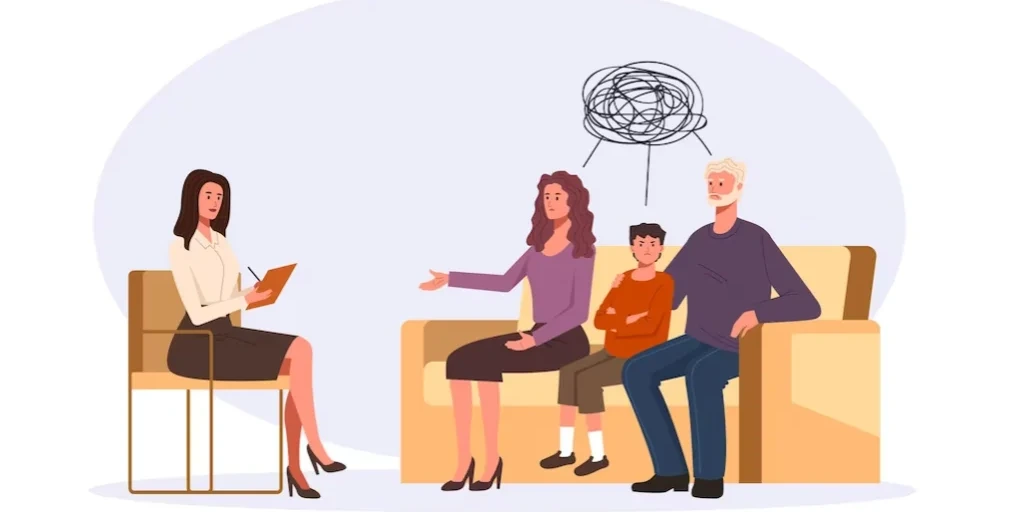
Pioneer Counseling Centers
Pioneer Counseling Centers is a private rehab located in West Bloomfield, Michigan. Pioneer Counseli...

AA – Alcoholics Anonymous – District 23
AA – Alcoholics Anonymous – District 23 is a non-profit rehab located in Port Huron, Michigan. AA – ...

Arab American and Chaldean Council
Arab American and Chaldean Council is a public rehab located in Southfield, Michigan. Arab American ...

Saint Joseph Mercy – Outpatient Behavioral Services
Saint Joseph Mercy – Outpatient Behavioral Services is a private rehab located in Canton, Michigan. ...

New Day Counseling
New Day Counseling is a private rehab located in Troy, Michigan. New Day Counseling specializes in t...

Berrien Mental Health – NorthStar Center
Berrien Mental Health – NorthStar Center is a public rehab located in Saint Joseph, Michigan. Berrie...

Choice One Rehabilitation
Choice One Rehabilitation is a private rehab located in Detroit, Michigan. Choice One Rehabilitation...

Alano Club
Alano Club is a non-profit rehab located in Kalamazoo, Michigan. Alano Club specializes in the treat...

Michigan Behavioral Health Institute
Michigan Behavioral Health Institute is a private rehab located in Essexville, Michigan. Michigan Be...

Tuscola Behavioral Health Systems
Tuscola Behavioral Health Systems is a public rehab located in Caro, Michigan. Tuscola Behavioral He...

Hiawatha Behavioral Health
Hiawatha Behavioral Health is a public rehab located in Manistique, Michigan. Hiawatha Behavioral He...

AuSable Valley Community Mental Health
AuSable Valley Community Mental Health is a public rehab located in Tawas City, Michigan. AuSable Va...

Bridgeway Center
Bridgeway Center is a private rehab located in Jackson, Michigan. Bridgeway Center specializes in th...

Action Net Psychological Services
Action Net Psychological Services is a private rehab located in Farmington Hills, Michigan. Action N...

Community Mental Health – The Recovery Center
The Community Mental Health (CMH) Recovery Center is a dual diagnosis substance abuse drug rehab in ...

Pathways Community Mental Health – Outpatient
Pathways Community Mental Health – Outpatient is a private rehab located in Munising, Michigan. Path...

Genesis Counseling
Genesis Counseling, in Sterling Heights, Michigan, offers mental and behavioral health care for yout...

Eastwood Clinics – Residential
Eastwood Clinics – Residential is a private rehab located in Royal Oak, Michigan. Eastwood Clinics –...

CARE – Utica Road
Founded in 1977, CARE - Utica Road is a Macomb County based non-profit with a 39 history of providin...

Consultants at Work
Consultants at Work is a private rehab located in Grand Rapids, Michigan. Consultants at Work specia...

Alano Club of Kent County
Alano Club of Kent County is a non-profit rehab located in Grand Rapids, Michigan. Alano Club of Ken...

Pathways
Pathways is a private rehab located in Grand Haven, Michigan. Pathways specializes in the treatment ...

Coordinated Rehabilitation
Coordinated Rehabilitation is a private rehab located in Grand Rapids, Michigan. Coordinated Rehabil...

AA – Alcoholics Anonymous
AA – Alcoholics Anonymous is a non-profit rehab located in Battle Creek, Michigan. AA – Alcoholics A...

Mount Pleasant Alano Club
Mount Pleasant Alano Club is a drug and alcohol rehab and community resource center in Mount Pleasan...

Face Truth and Clarity on Alcohol
Face Truth and Clarity on Alcohol is a private rehab located in Clare, Michigan. Face Truth and Clar...

Little Traverse Bay Bands of Odawa Indians Anishinaabe Life Services
Little Traverse Bay Bands of Odawa Indians Anishinaabe Life Services is dedicated to helping individ...

Psychological Consultants of Michigan
Psychological Consultants of Michigan has been providing compassionate outpatient Mental Health and ...

Washtenaw County Community Mental Health – Youth & Family Services
Washtenaw County Community Mental Health – Youth & Family Services is a private rehab located in Ann...

Family Services
Family Services is a private rehab located in Dearborn, Michigan. Family Services specializes in the...

Recovery Pathways
Recovery Pathways is a private rehab located in Bay City, Michigan. Recovery Pathways specializes in...

Michigan Detox Specialists
Michigan Detox Specialists is a private rehab located in Southfield, Michigan. Michigan Detox Specia...

Foster Reagh Rehabilitation Consultants
Foster Reagh Rehabilitation Consultants is a private rehab located in Bay City, Michigan. Foster Rea...

Newaygo County Mental Health
Newaygo County Mental Health is a public rehab located in White Cloud, Michigan. Newaygo County Ment...

Serenity Point Recovery Center
Serenity Point Recovery Center is a drug and alcohol addiction rehabilitation treatment center speci...

Alcoholics For Christ – First Assembly of God
Alcoholics For Christ - First Assembly of God is located in Dearborn Heights, Michigan. Alcoholics F...

Alcoholics For Christ – Hope Community Church
Alcoholics For Christ - Hope Community Church is located in Detroit, Michigan. Alcoholics For Christ...

AA – Grateful Group
Alcoholics Anonymous (AA) - Greatful Group is an Alcoholics Anonymous fellowship of women and men wh...

Arbor Circle – 1101 Ball Avenue
Arbor Circle - 1101 Ball Avenue is located in Grand Rapids, Michigan. Arbor Circle - 1101 Ball Avenu...

Pathways
Pathways - East 82nd Street offers outpatient treatment for individuals with alcohol and/or substanc...

Arbor Circle – 703 Ball Avenue
Arbor Circle - Leonard Street is located in Grand Rapids, Michigan. Arbor Circle - Leonard Street ha...

Pathways Community Mental Health
Pathways Community Mental Health is a private rehab located in Newberry, Michigan. Pathways Communit...
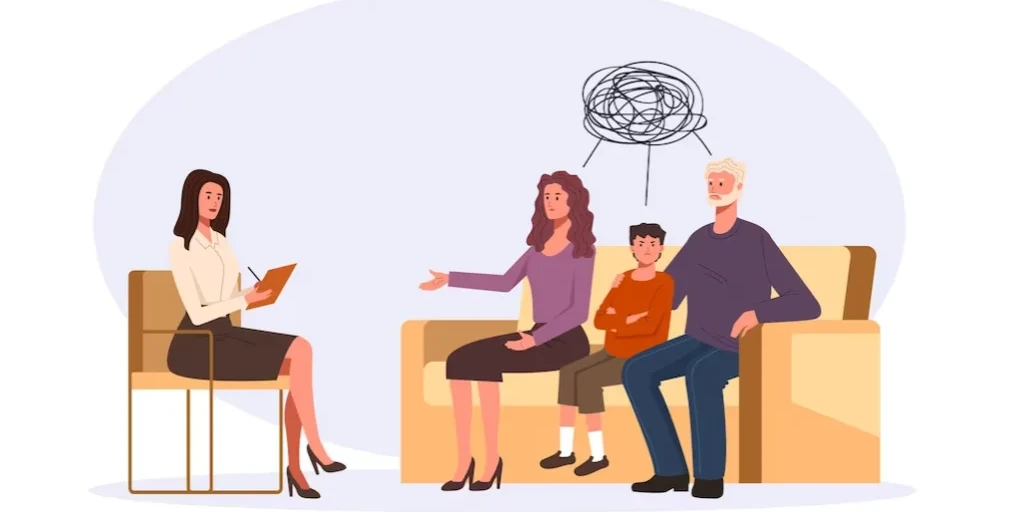
Advocate Counseling
Advocate Counseling provides Alcohol assessments, Alcohol Highway Safety Class or DUI classes, Drive...

Alcoholics For Christ – CHANGE Ministries
Alcoholics For Christ - CHANGE Ministries is located in Detroit, Michigan. Alcoholics For Christ - C...

Alcoholics For Christ – Living Word Church
Alcoholics For Christ - Living Word Church is located in Midland, Michigan. Alcoholics For Christ - ...

Alcoholics For Christ – Mel Trotter Ministries
Alcoholics For Christ - Mel Trotter Ministries is located in Grand Rapids, Michigan. Alcoholics For ...

Alcoholics For Christ – Glad Tidings Assembly of God
Alcoholics For Christ - Glad Tidings Assembly of God is located in East Peoria, Michigan. Alcoholics...

Alcoholics For Christ – Assembly of God
Alcoholics For Christ - Assembly of God is located in St. Clair Shores, Michigan. Alcoholics For Chr...

Alcoholics For Christ – Bethel Church of the Apostolic
Alcoholics For Christ - Bethel Church of the Apostolic is located in Detroit, Michigan. Alcoholics F...

Alcoholics For Christ – Grace Christian Fellowship
Alcoholics For Christ - Grace Christian Fellowship is located in Livonia, Michigan. Alcoholics For C...

Alcoholics For Christ – Merriman Road Baptist Church
Alcoholics For Christ - Merriman Road Baptist Church is located in Garden City, Michigan. Alcoholics...

Alcoholics For Christ – Lighthouse Samaritan Missionary Baptist Church
Alcoholics For Christ - Lighthouse Samaritan Missionary Baptist Church is an inter-denominational, n...

Alcoholics For Christ – Christ the King Lutheran Church
Alcoholics For Christ - Christ the King Lutheran Church is located in Southgate, Michigan. Alcoholic...

Alcoholics For Christ – Lakeridge Ministries
Alcoholics For Christ - Lakeridge Ministries is located in Detroit, Michigan. Alcoholics For Christ ...

Professional Counseling Center
Professional Counseling Center offers outpatient services for individuals with alcohol and/or substa...

Alcoholics For Christ – Evangel Christian Churches
Alcoholics For Christ - Evangel Christian Churches is located in Roseville, Michigan. Alcoholics For...

Arenac Behavioral Health
Arenac Behavioral Health is a public rehab located in Bay City, Michigan. Arenac Behavioral Health s...

Alcoholics For Christ – Full Potential Ministry
Alcoholics For Christ - Full Potential Ministry is located in Imlay City, Michigan. Alcoholics For C...

Alcoholics For Christ – In His Presence Ministries
Alcoholics For Christ - In His Presence Ministries is located in Bay City, Michigan. Alcoholics For ...

Holy Cross Counseling
Holy Cross Counseling - 712 N. Grand Traverse Street provides a comprehensive substance abuse treatm...

Alcoholics For Christ – Faith Christian Church
Alcoholics For Christ - Faith Christian Church is located in Lapeer, Michigan. Alcoholics For Christ...

Alcoholics For Christ – Ward Church
Alcoholics For Christ - Ward Church is located in Northville, Michigan. Alcoholics For Christ - Ward...

Alcoholics For Christ – Metropolitan Community Tabernacle
Alcoholics For Christ - Metropolitan Community Tabernacle is located in Detroit, Michigan. Alcoholic...

Alcoholics For Christ – The River Community Church
Alcoholics For Christ - The River Community Church is located in Howell, Michigan. Alcoholics For Ch...

Great Lakes Recovery Centers
Great Lakes Recovery Centers - Newberry Avenue is a non-profit organization that specializes in prov...

Oxford House Lake Michigan
Oxford House Lake Michigan is a non-profit rehab located in Montgomery, AL. Oxford House Lake Michig...

Community Programs
Community Programs offers outpatient services for individuals with a substance abuse diagnosis or se...

Crossroads for Youth
Crossroads for Youth is a non-profit agency that serves at-risk children and youth. They provide eve...

Growth Works
Growth Works is situated in Garden City, Michigan, an addiction treatment center specializing in out...

Detroit Behavioral Institute – 5250 John R. Street
Detroit Behavioral Institute - 5250 John R. Street is a private rehab located in Detroit, Michigan. ...

NCADD – GDA – Vantage Point West
The National Council on Alcoholism and Drug Dependence Greater Detroit Area (NCADD-GDA) - Vantage Po...

Alcoholics For Christ – Grace Missionary Church
Alcoholics For Christ - Grace Missionary Church is located in Waterford, Michigan. Alcoholics For Ch...

Alcoholics For Christ – Presentation Our Lady Of Victory
Alcoholics For Christ - Presentation Our Lady Of Victory is located in Detroit, Michigan. Alcoholics...
Alcoholics For Christ – Beacon Light Full Gospel Ministries
Alcoholics For Christ - Beacon Light Full Gospel Ministries is located in Detroit, Michigan. Alcohol...